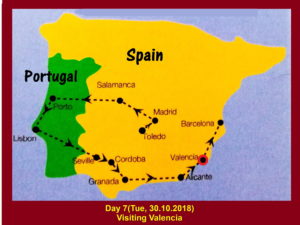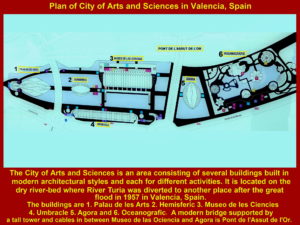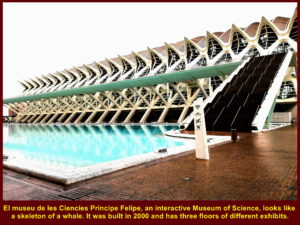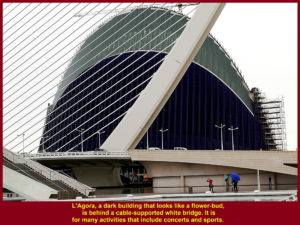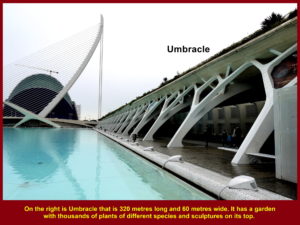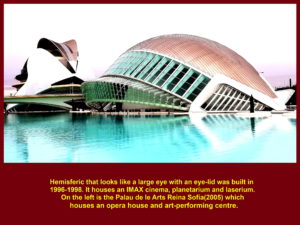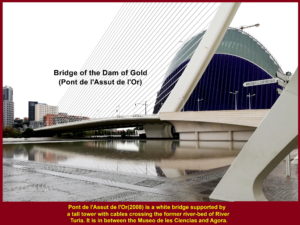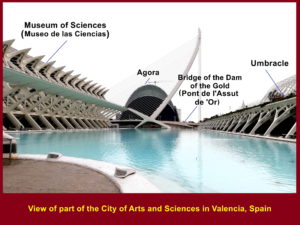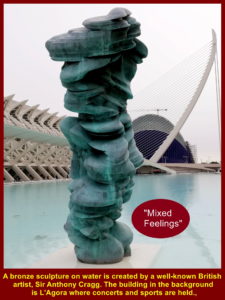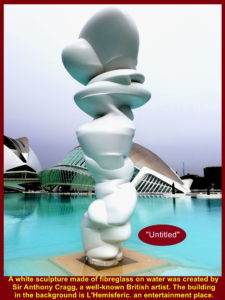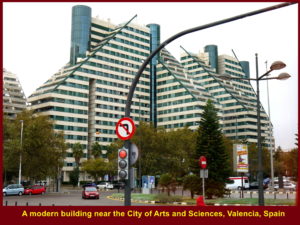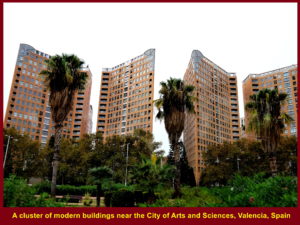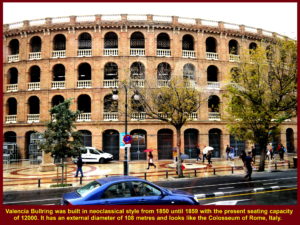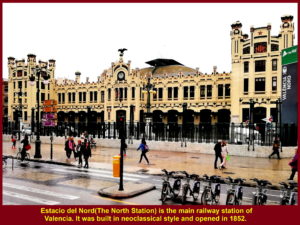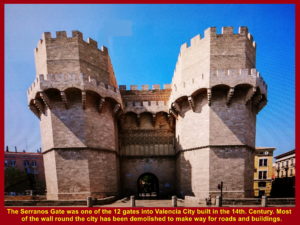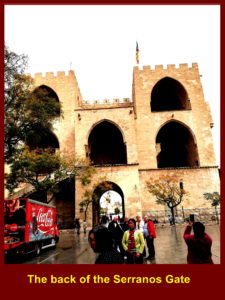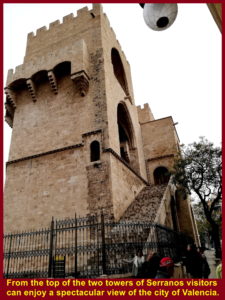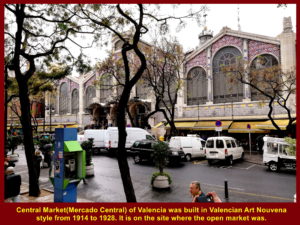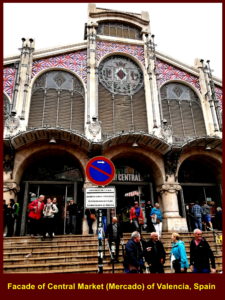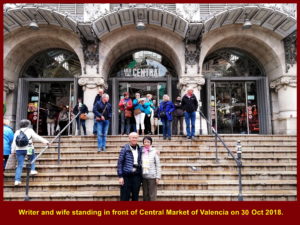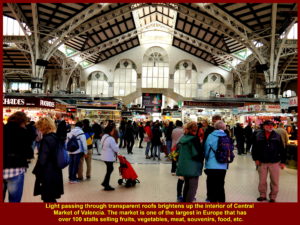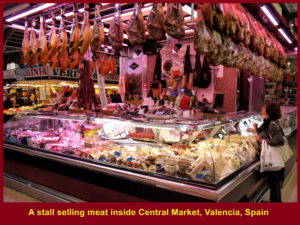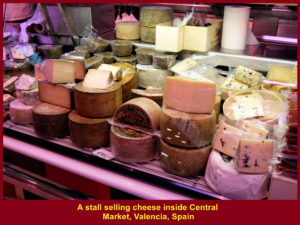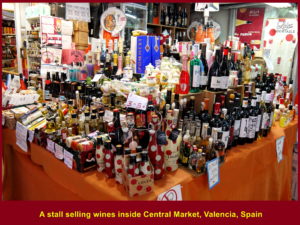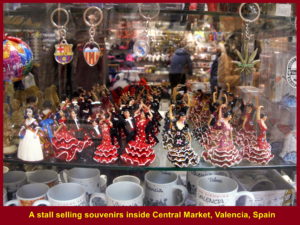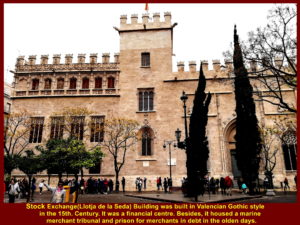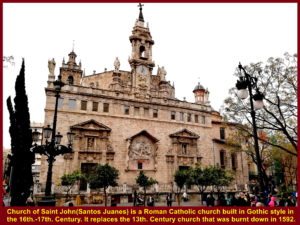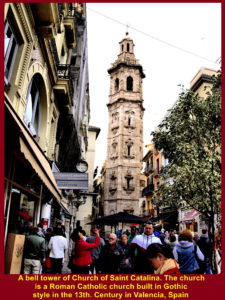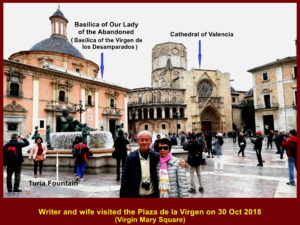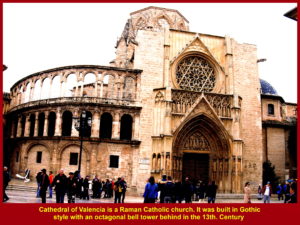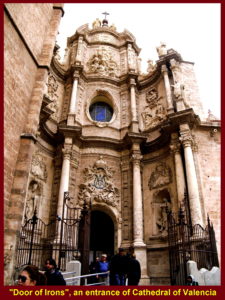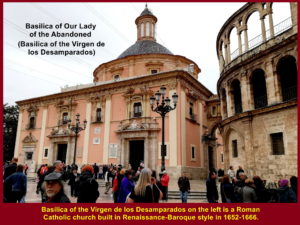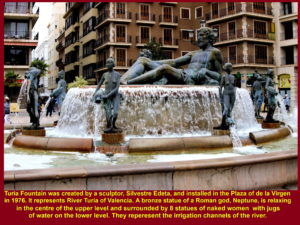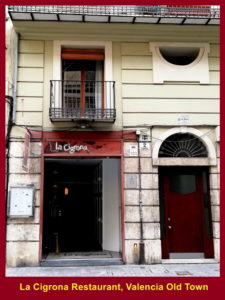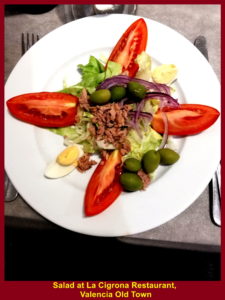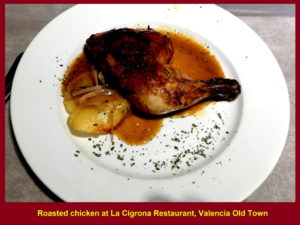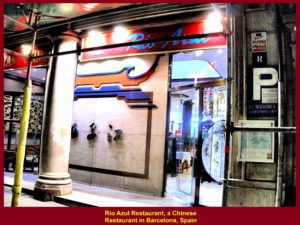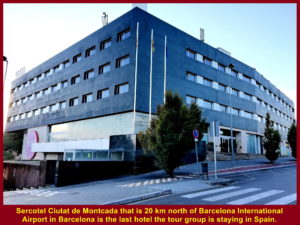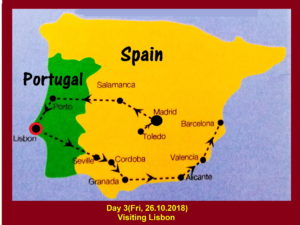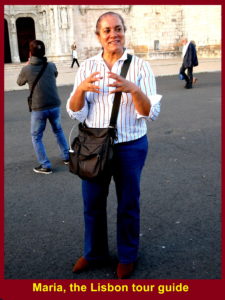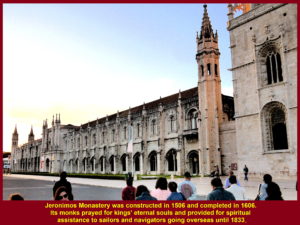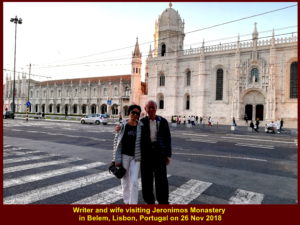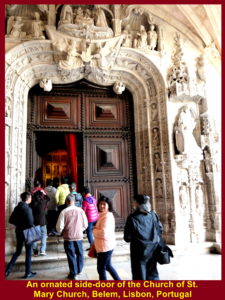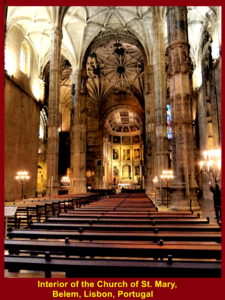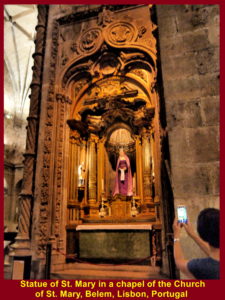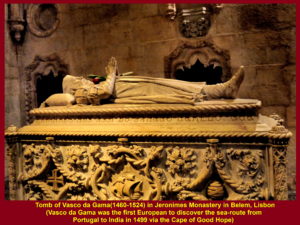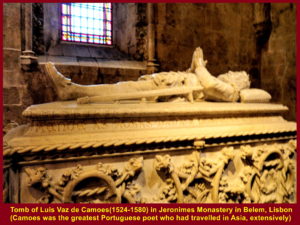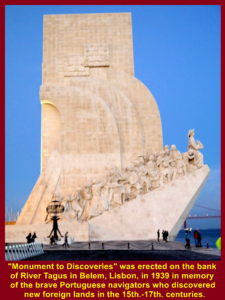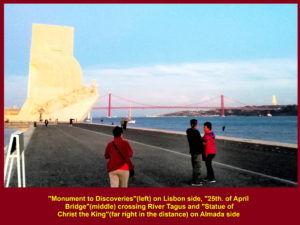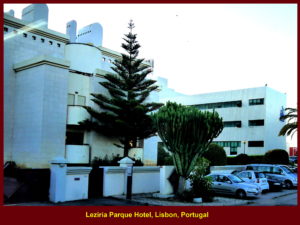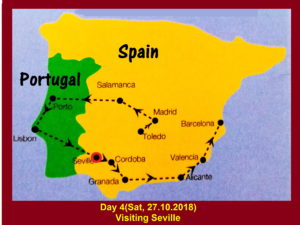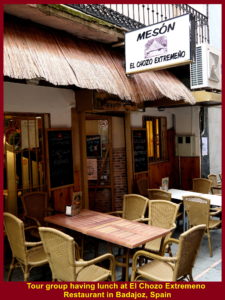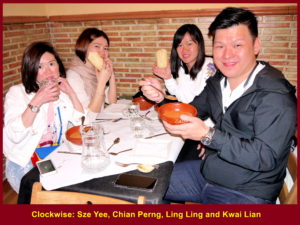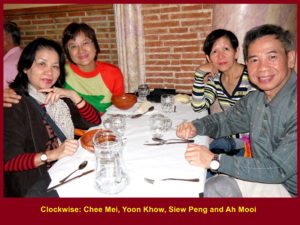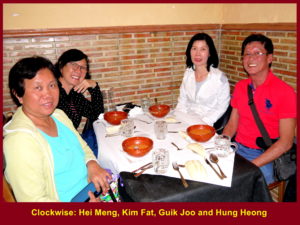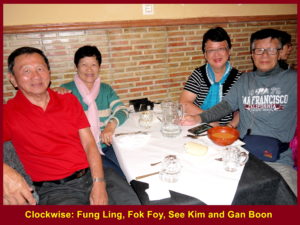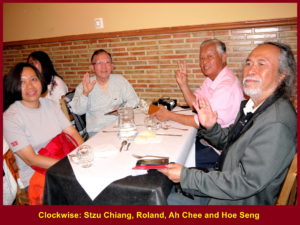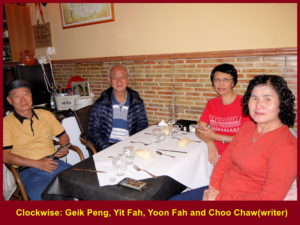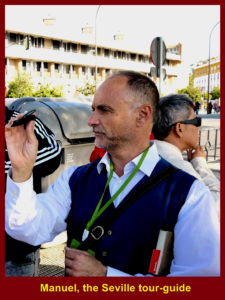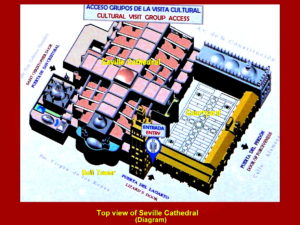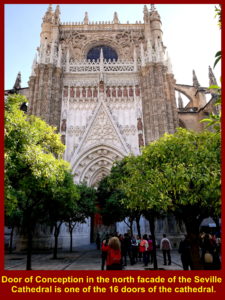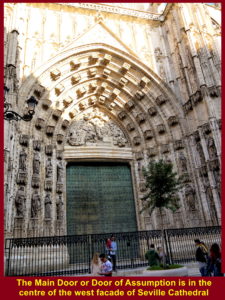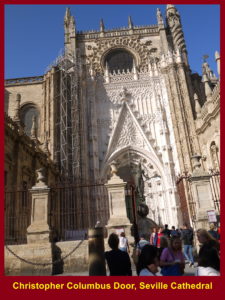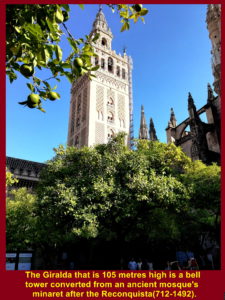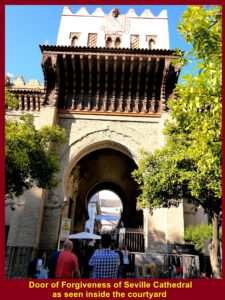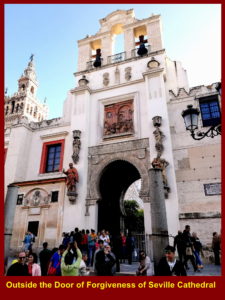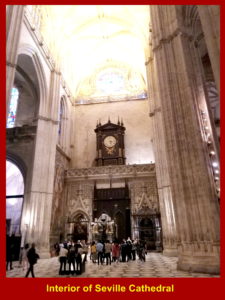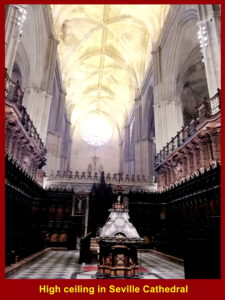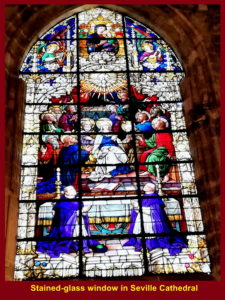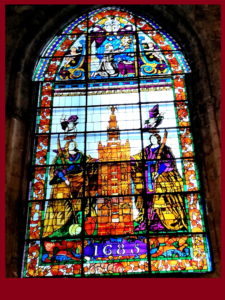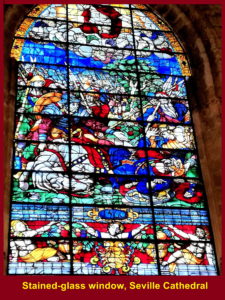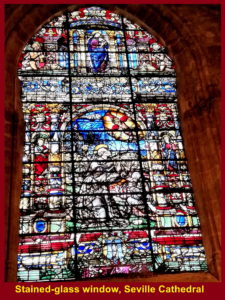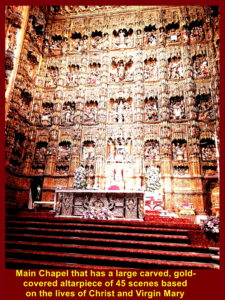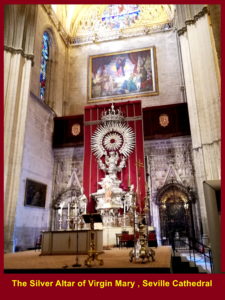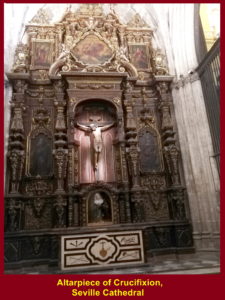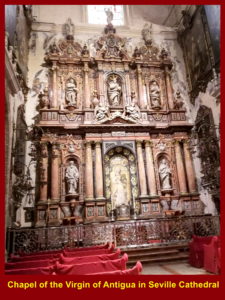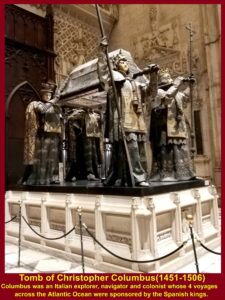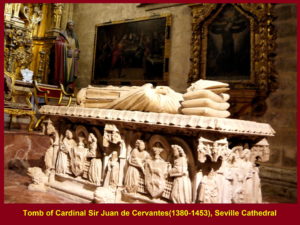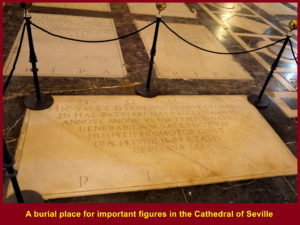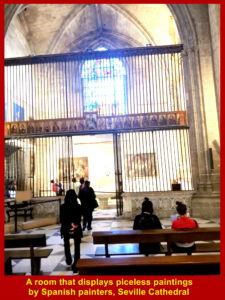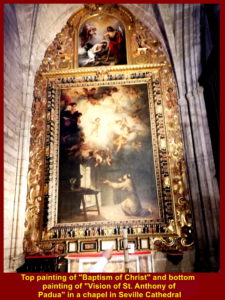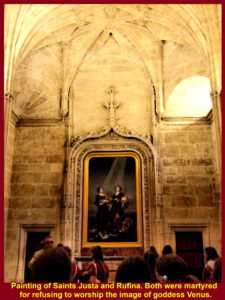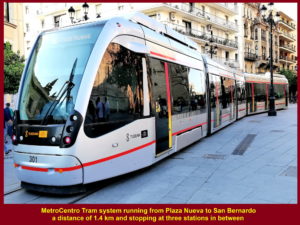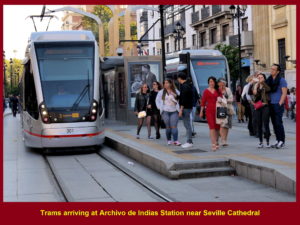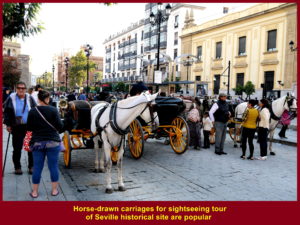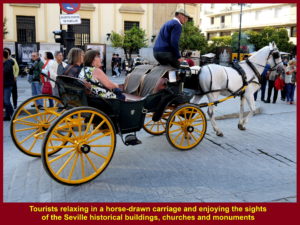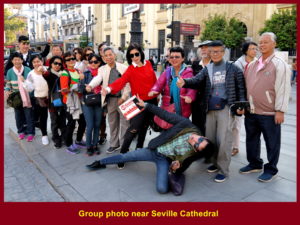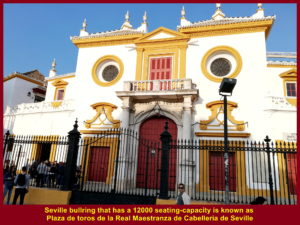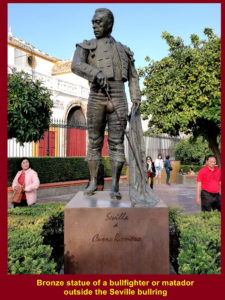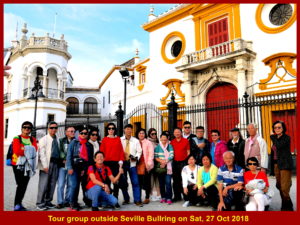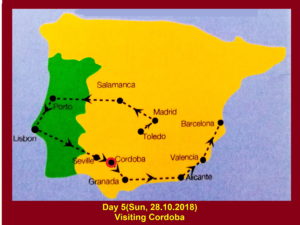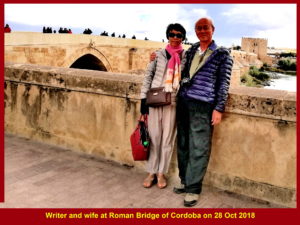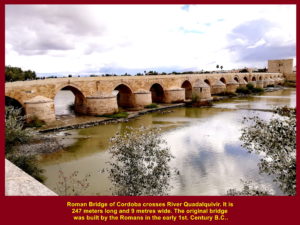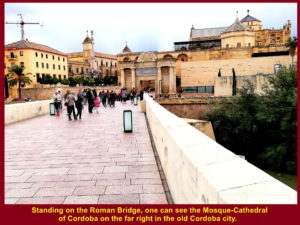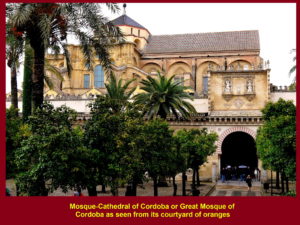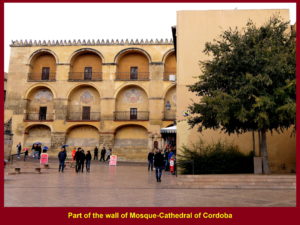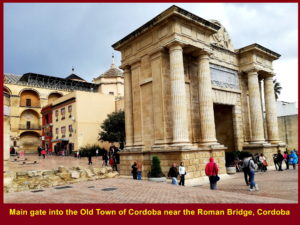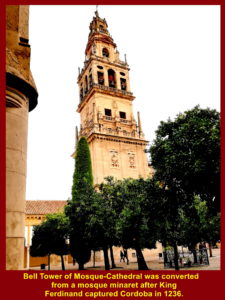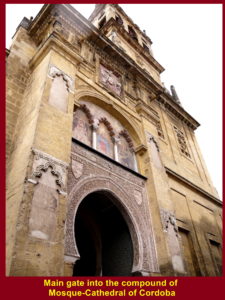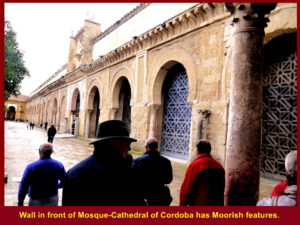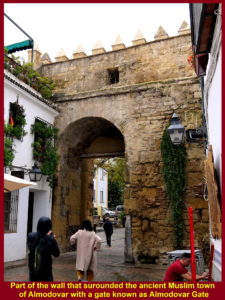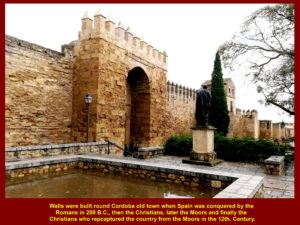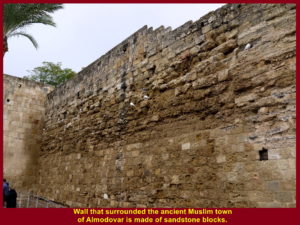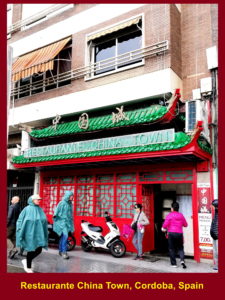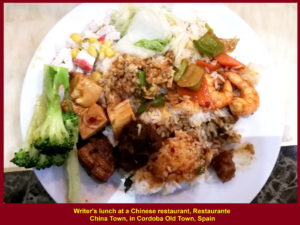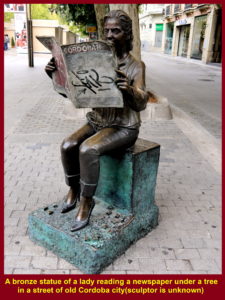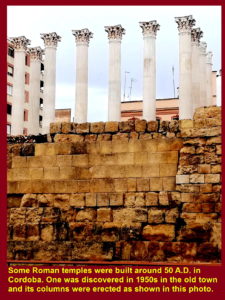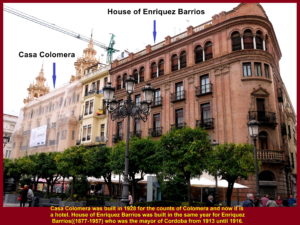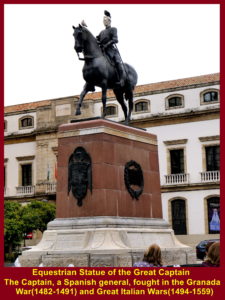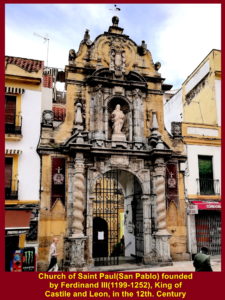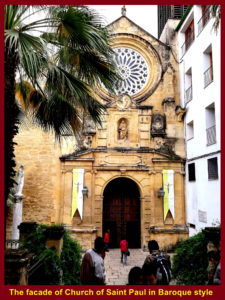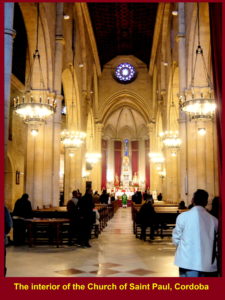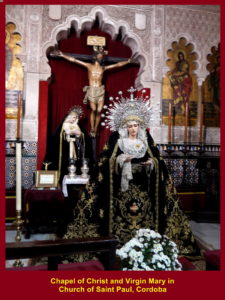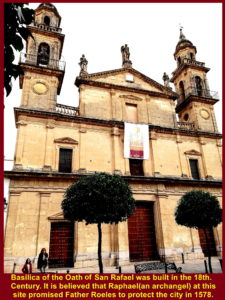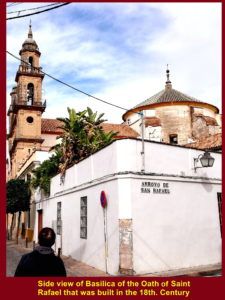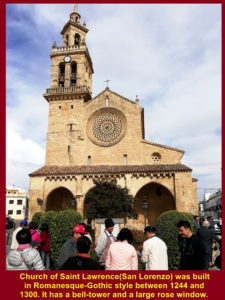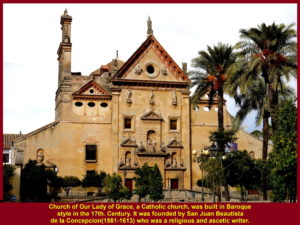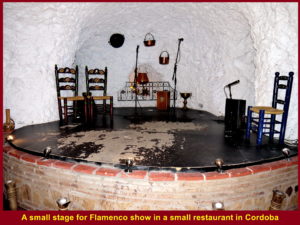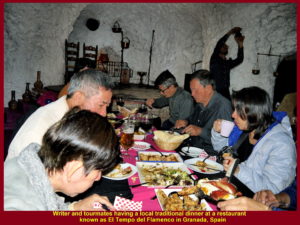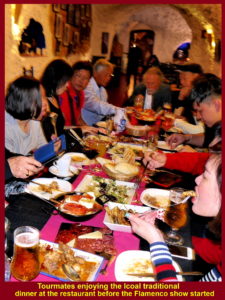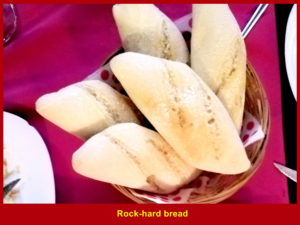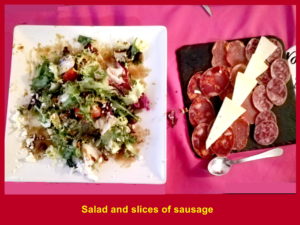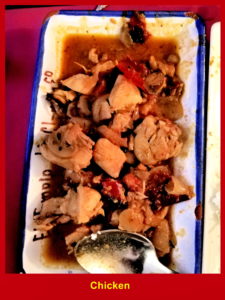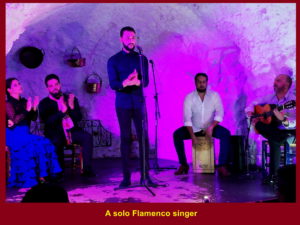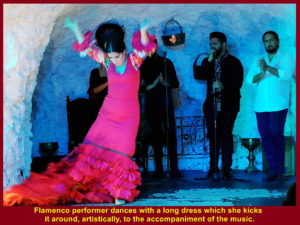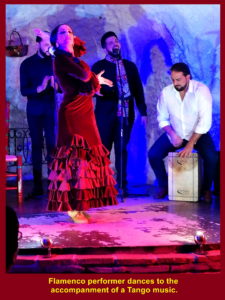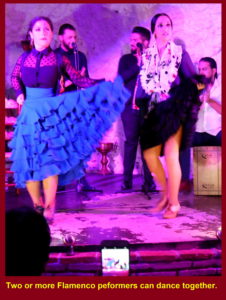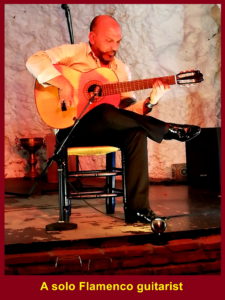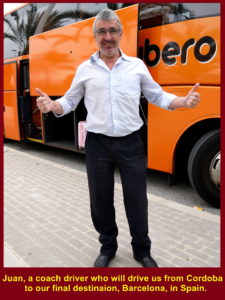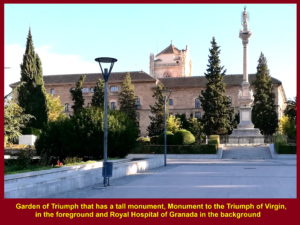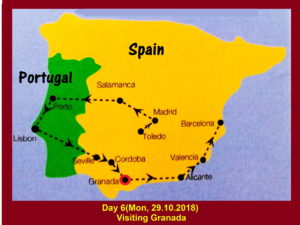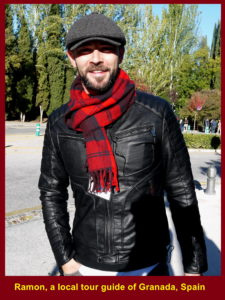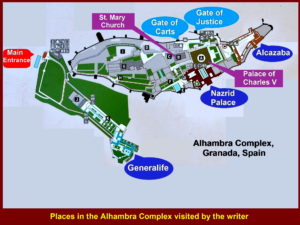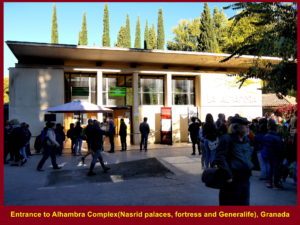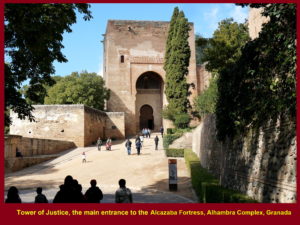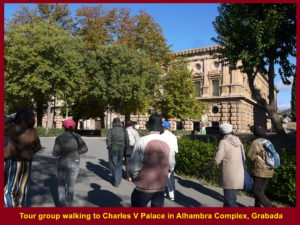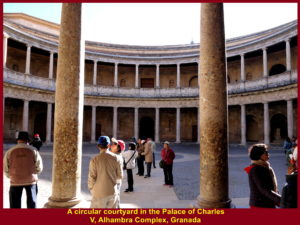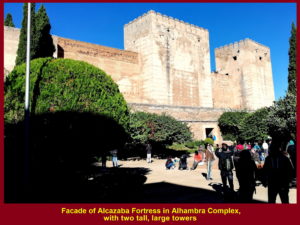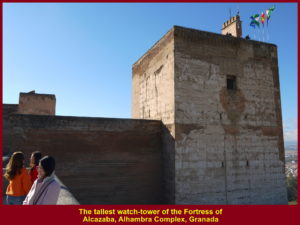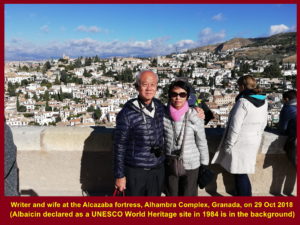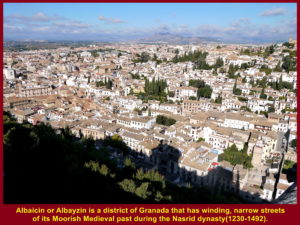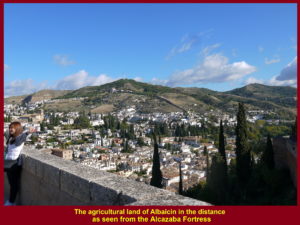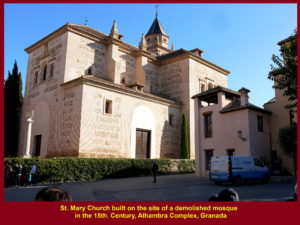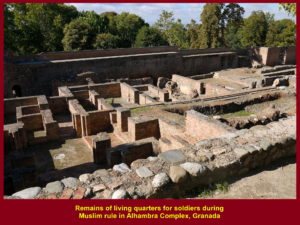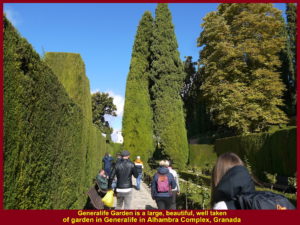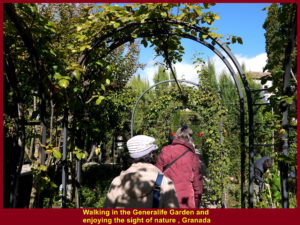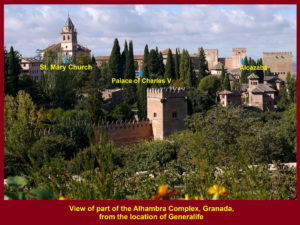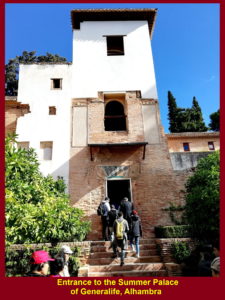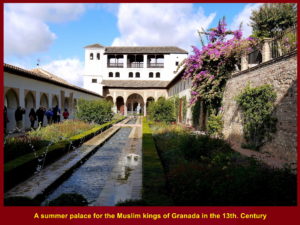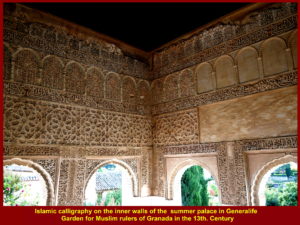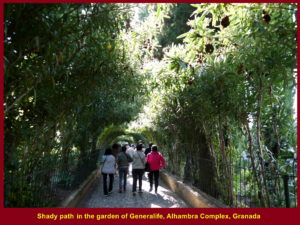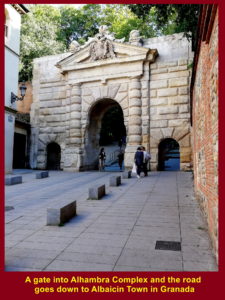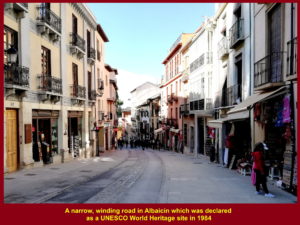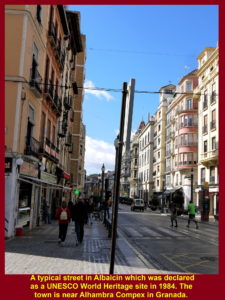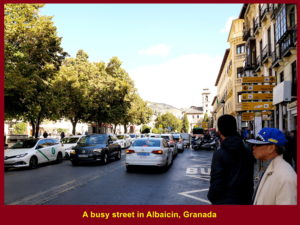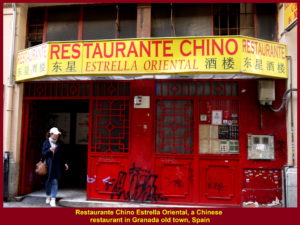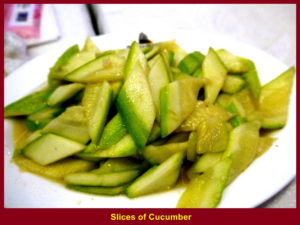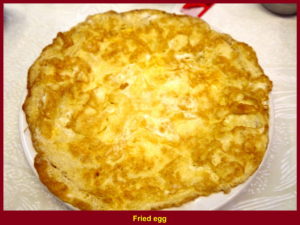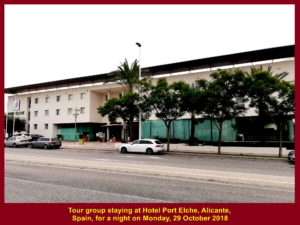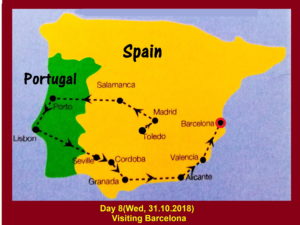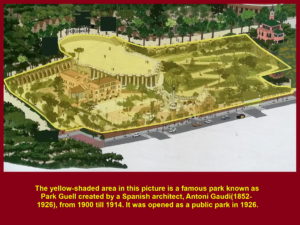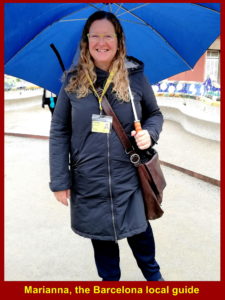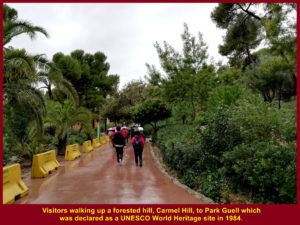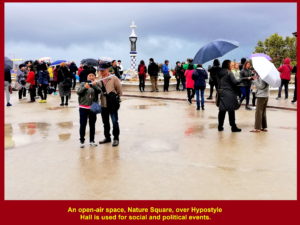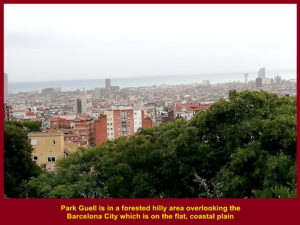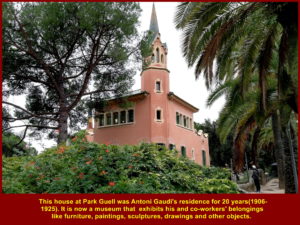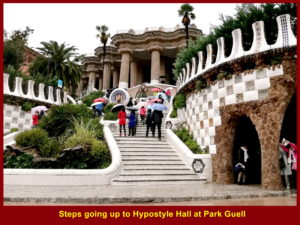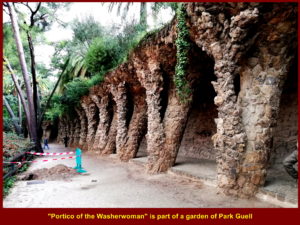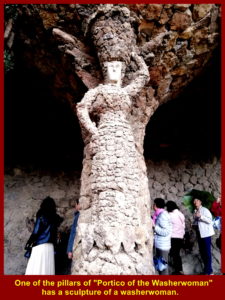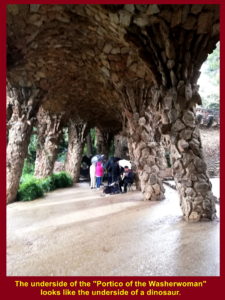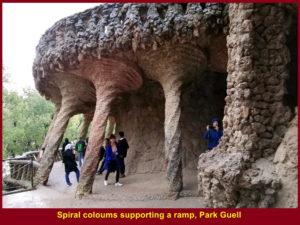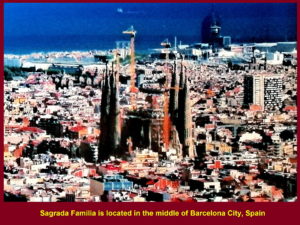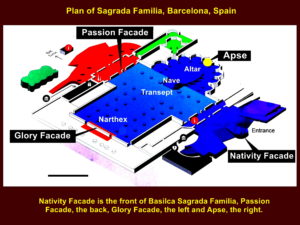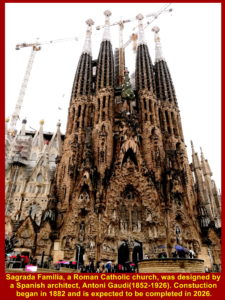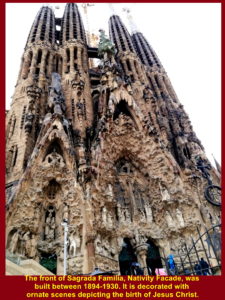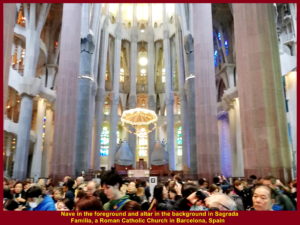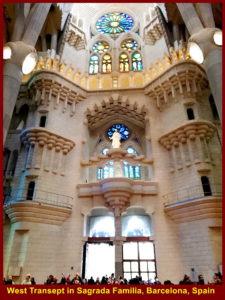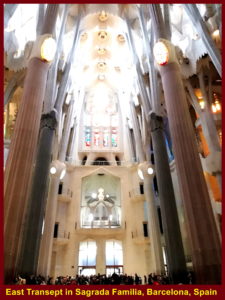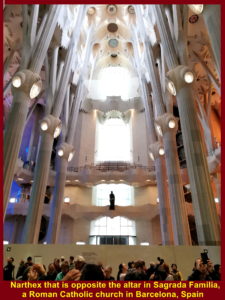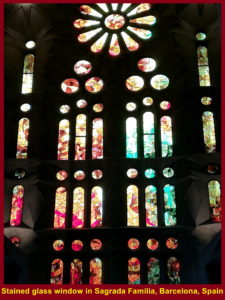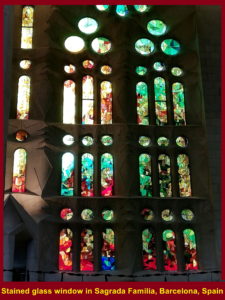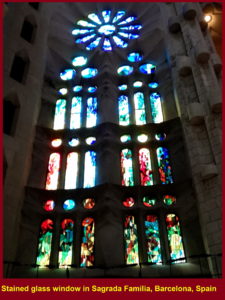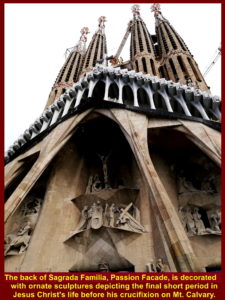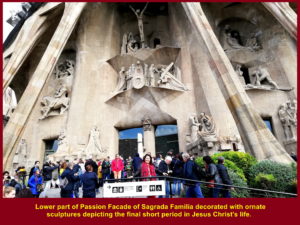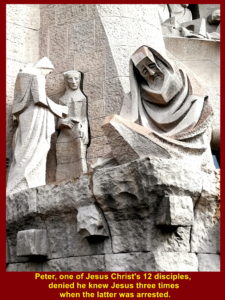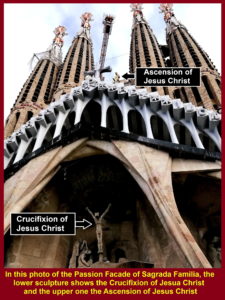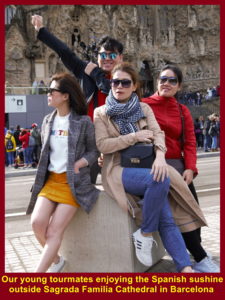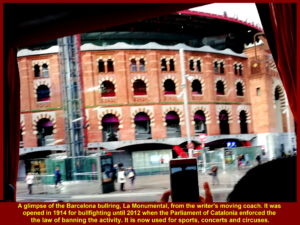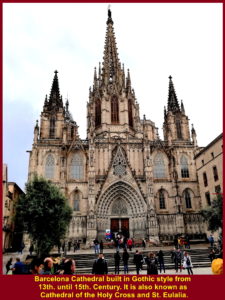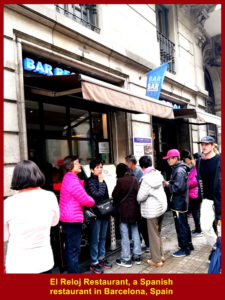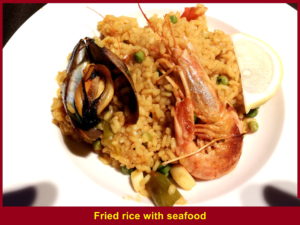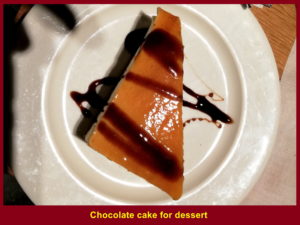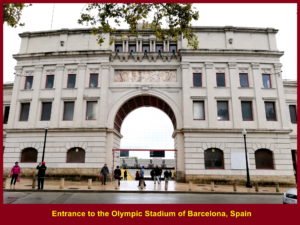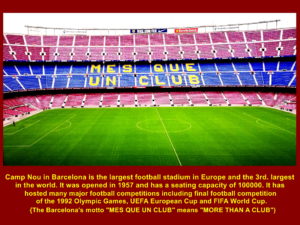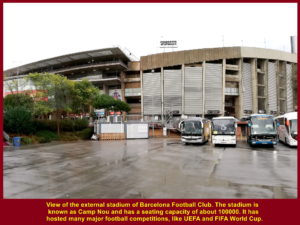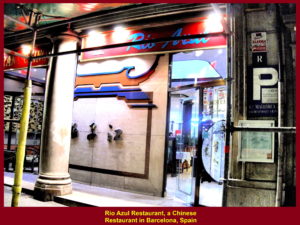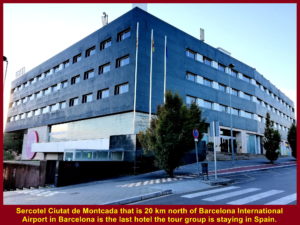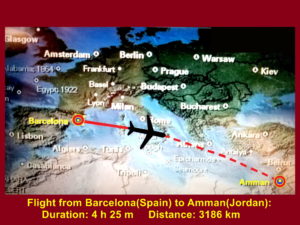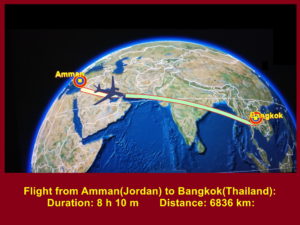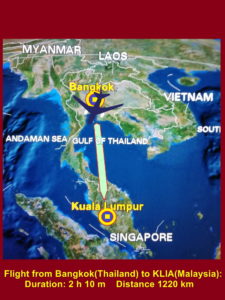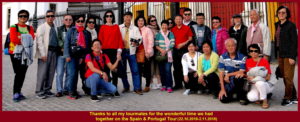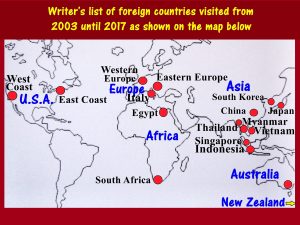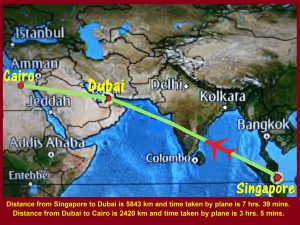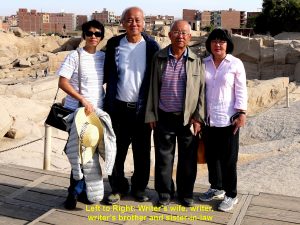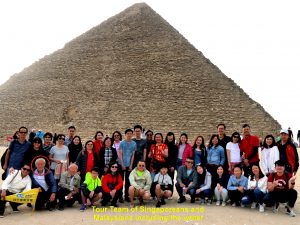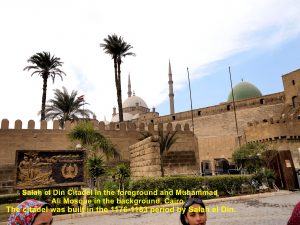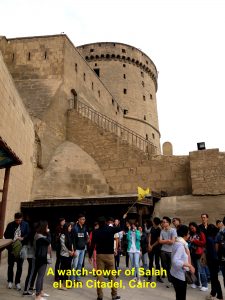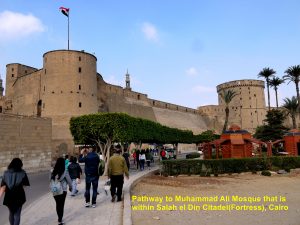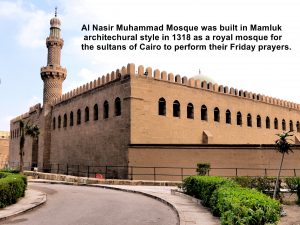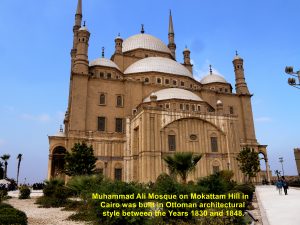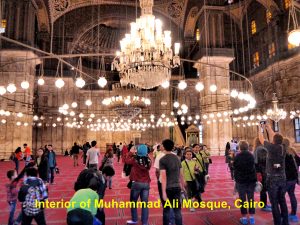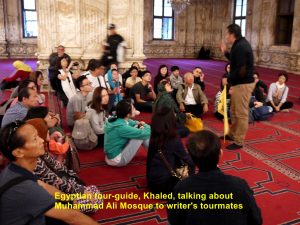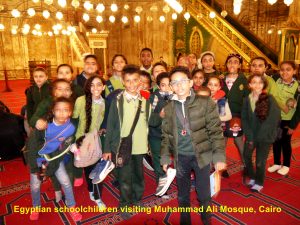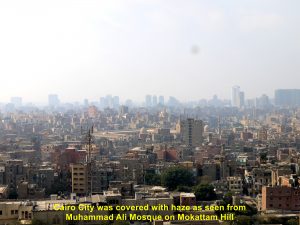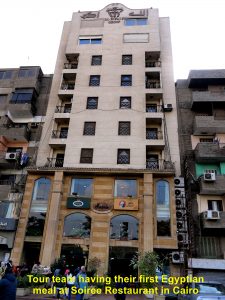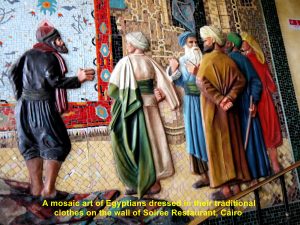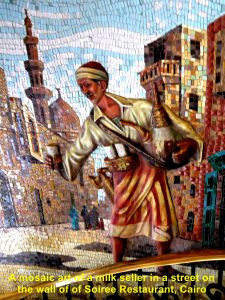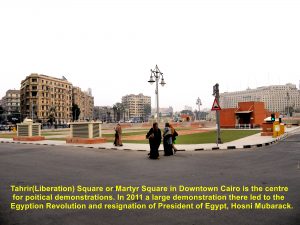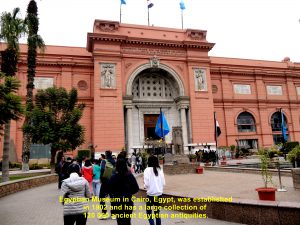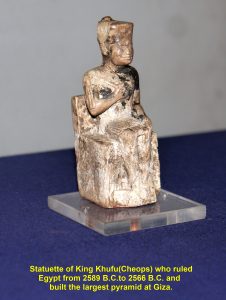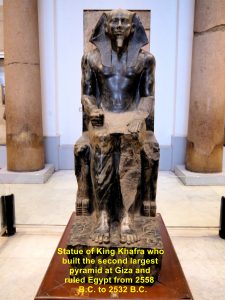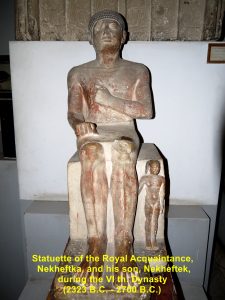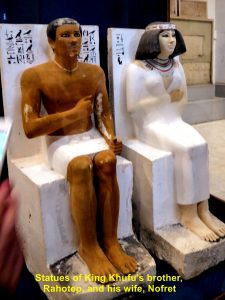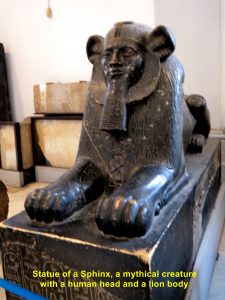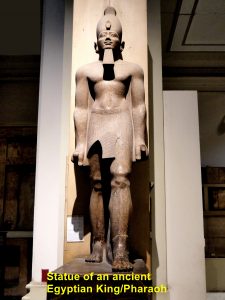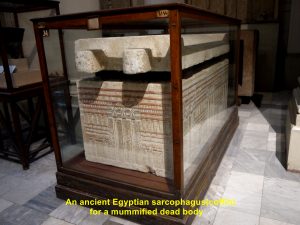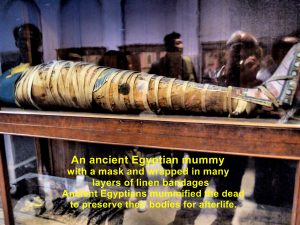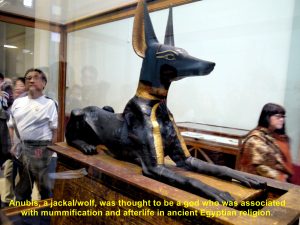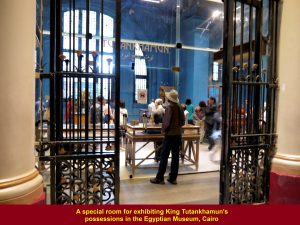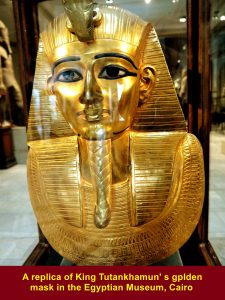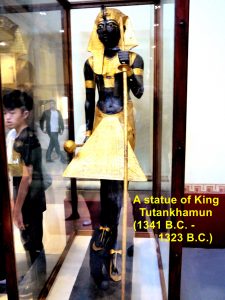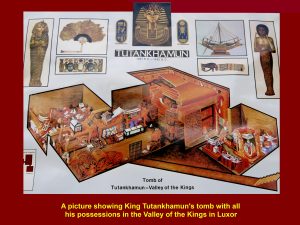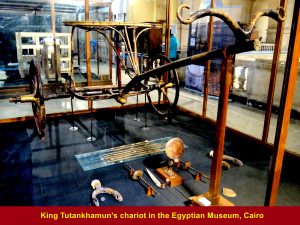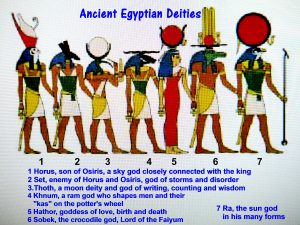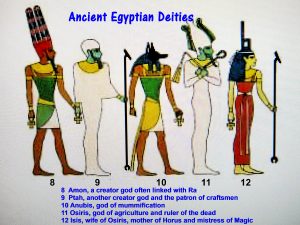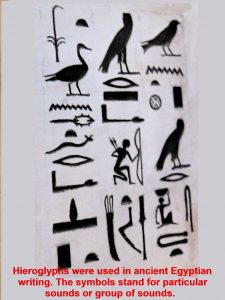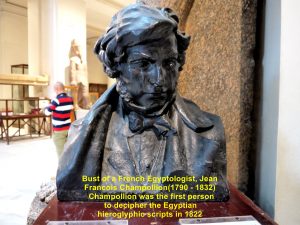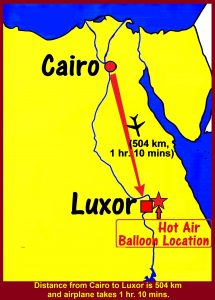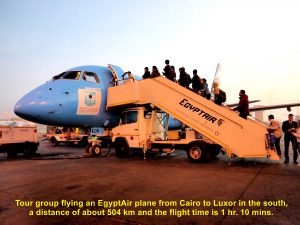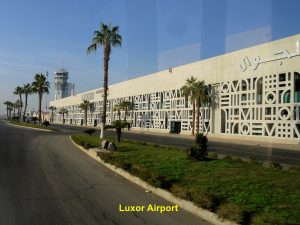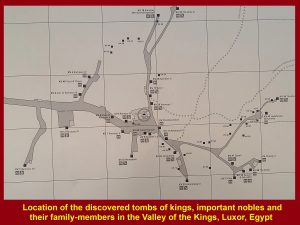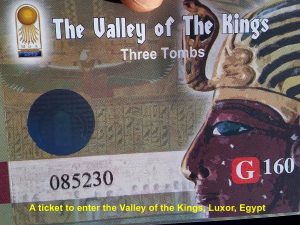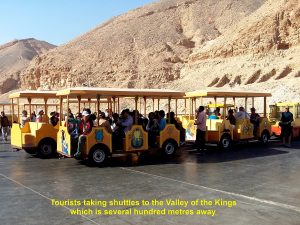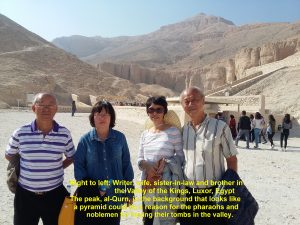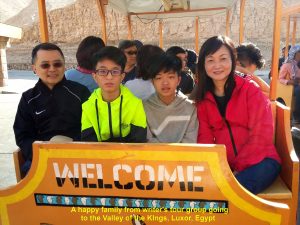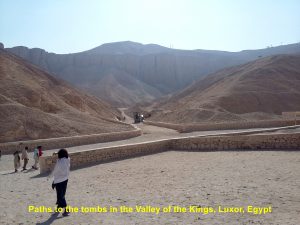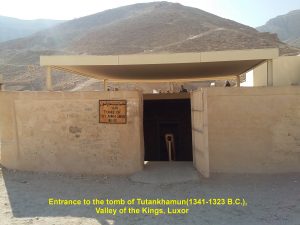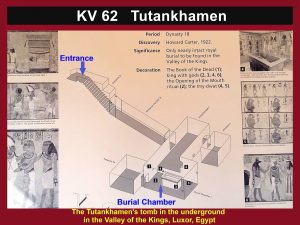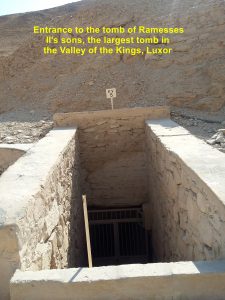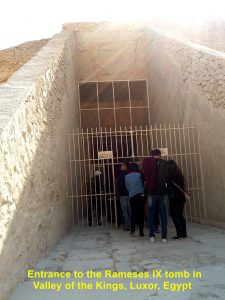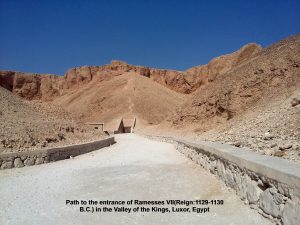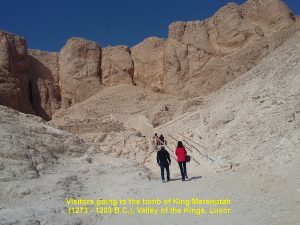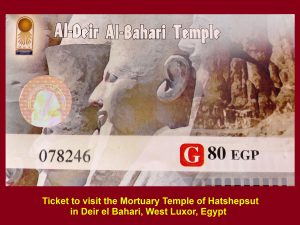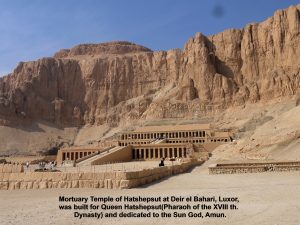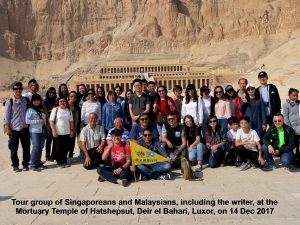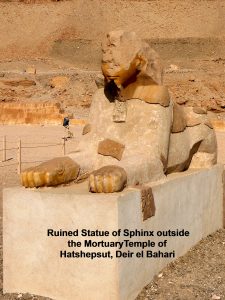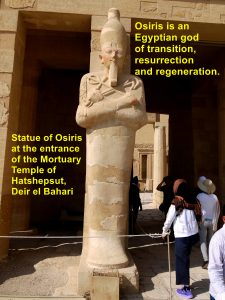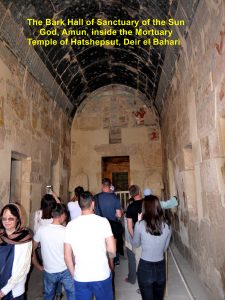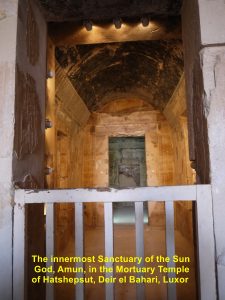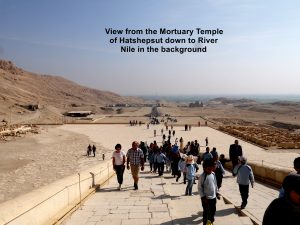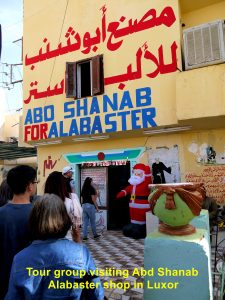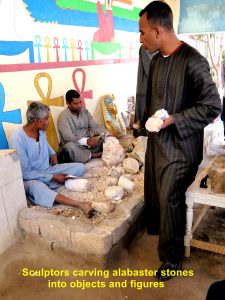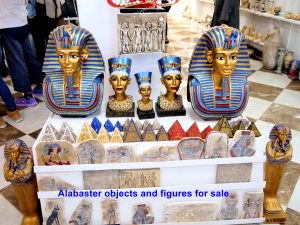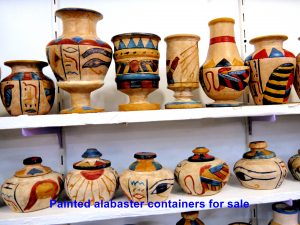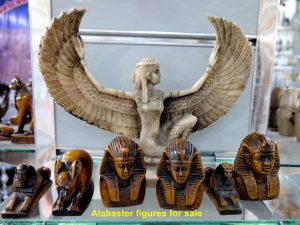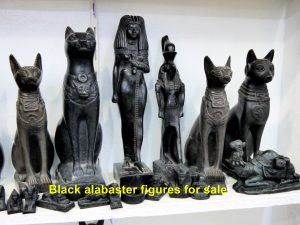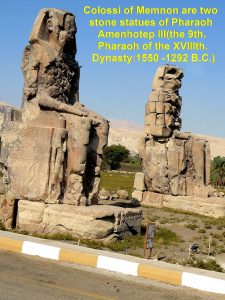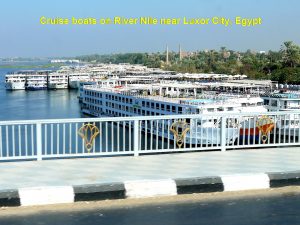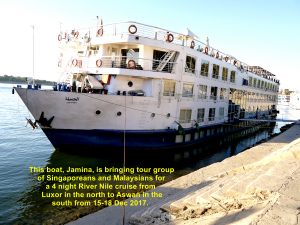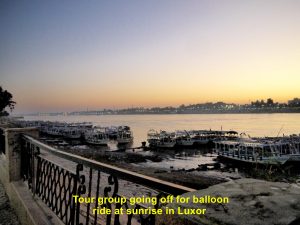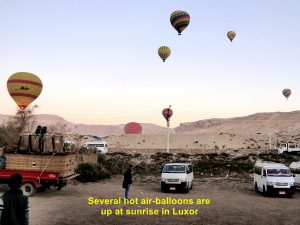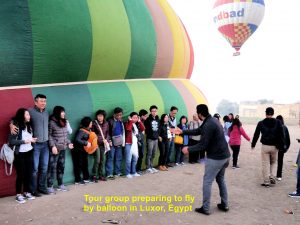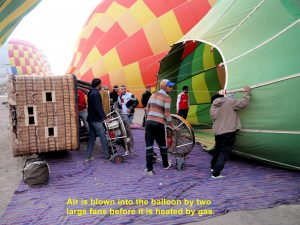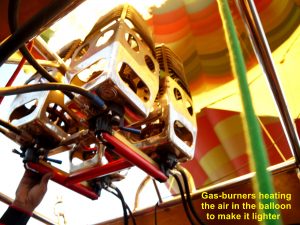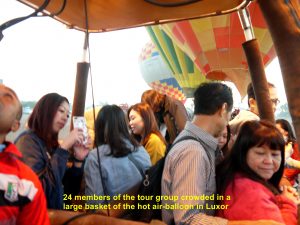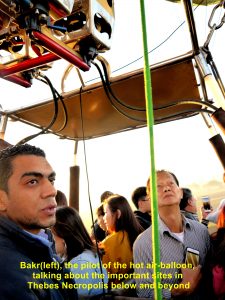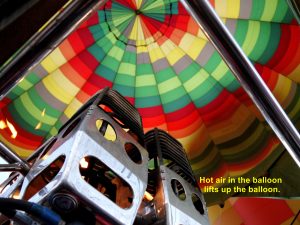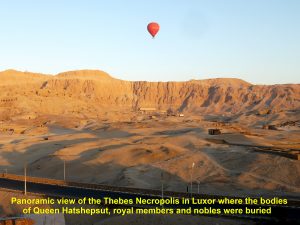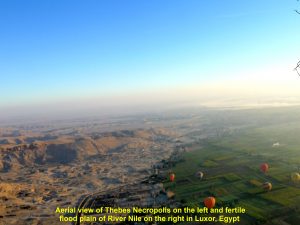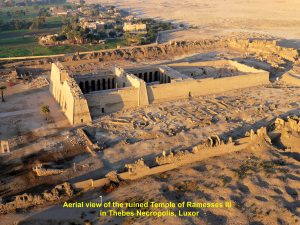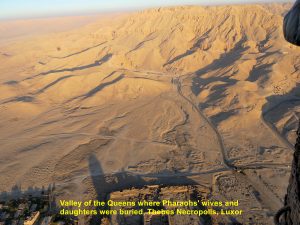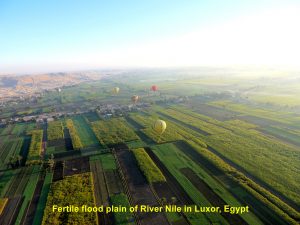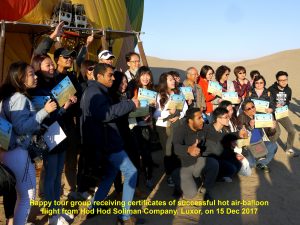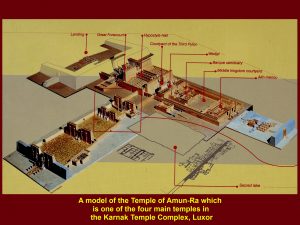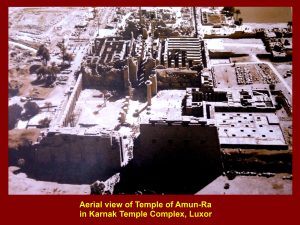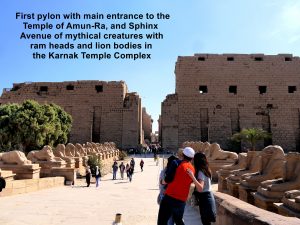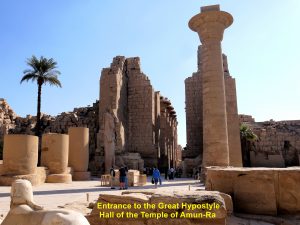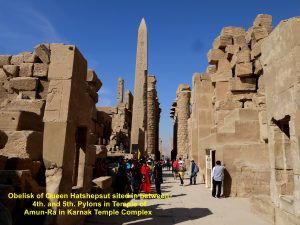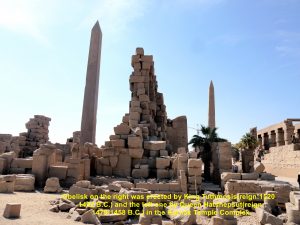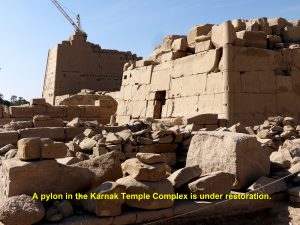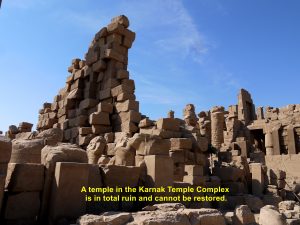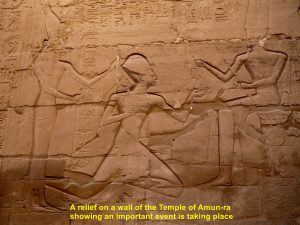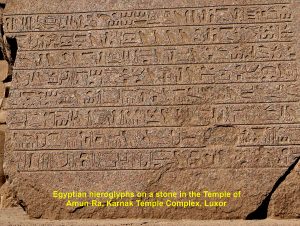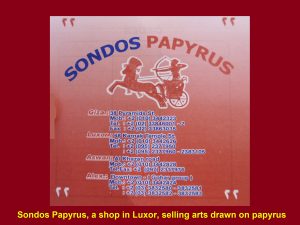Spain & Portugal Travel Part IX: Valencia
Spain & Portugal Travel Part IX: Valencia
Valencia
Day 9 Tuesday, 30 October 2018
On this day, we were going to visit Valencia.
In the morning, we left Hotel Port Elche in Alicante where we stayed the previous night and travelled 165 km north-east to Valencia. The journey would take 2 hours.
Valencia
Valencia is a large city of 800,000 inhabitants.
When we arrived at Valencia, we visited a modern place known as “Arts and Sciences City”.
Map showing the location of Valencia
Arts and Sciences City, Valencia
In 1957, Valencia City experienced a disastrous flood when the water of River Turia overflowed and flooded the city. Later, the river was diverted elsewhere and the dry river-bed in the city was converted to a unique, modern place known as “Arts and Sciences City”.
Plan of Arts and Sciences City
Arts and Sciences City has buildings built in modern architectural style designed by Santiago Calatrava and Felix Candela. Each building has one or more functions.
The plan of the place below shows the locations of the following buildings, Museum of Sciences, Agora, Umbracle and Hemisferic to name a few.
Plan of Arts and Sciences City
Some of the modern buildings are described below.
Museum of Sciences(Museo de les Ciencies)
Museum of Sciences looks like a whale skeleton built in 2000. It is an interactive museum that has three floors of different Science exhibits.
Museum of Sciences
Agora
Agora built in 2009 looks like a flower-bud and is used for many activities, including concerts, exhibitions, conventions and sports.
Agora
Umbracle
Umbracle built in 2001 looks like a bridge that is 320 metres long and 60 metres wide. Below it is a road but its top is a garden. The garden has more than 1000 plants of different species and sculptures, too.
Umbracle
Umbracle
Hemisferic
Hemisferic looks like an eye with an eyelid was built in 1998. It houses an IMAX cinema, planetarium and laserium.
Hemisferic
Hemisferic
Bridge of the Dam of the Gold(El Pont de l’Assut de l’Or)
This bridge was built in 2008 over the dry river-bed of River Turia. It is supported by a 125 metre high tower and cables.
Bridge of the Dam of the Gold
The photo below shows part of the Arts and Sciences City.
Part of Arts and Sciences City
Sculptures in Arts and Sciences City
There are several sculptures of different forms and sizes all over Arts and Sciences City, including the two shown below.
Bronze Sculpture
A bronze sculpture in a pool of water. It is known as “Mixed Feelings” which was created by a British artist, Anthony Cragg.
Bronze Sculpture
White Fibre-Glass Sculpture
Anthony Cragg created another sculpture that is made of fibre-glass and known as “Untitled”. It is erected in another pool of water.
White Fibre-Glass Sculpture
Modern Buildings near Arts and Sciences City
From the Arts and Sciences City, a visitor can see some modern residential buildings nearby, including the ones shown in the two photos below.
Modern Building
A Cluster of Modern Buildings
Journey to Valencia Old Town
When we were on our way to the Valencia Old Town from Arts and Sciences City, we passed by two landmarks, Valencia Bullring and the North Station as described below.
Valencia Bullring
Valencia bullring(Plaza de Toros de Valencia) was opened in 1859 and has a seating capacity of 12,000. It is built in Neoclassical style and looks like the Colosseum in Rome.
Valencia Bullring
The North Station(Estacio del Nord)
This attractive building is the main railway station of Valencia. It is built in Neoclassical style and opened in 1852.
The North Station
Serranos Gate
When we reached the Valencia Old Town, we got down from our coach and walked a short distance to the town.
On the way, we saw was an imposing gate of the town known as Serranos Gate.
There were twelve gates with walls round the old town built in the 14th. Century to protect it from foreign invaders. But now only two are left and a few parts of the old wall remain.
Below is the Serronos Gate that we came across and it is kept as a monument.
The Front of Serranos Gate
The Back of Serranos Gate
The Side of Serranos Gate
Central Market(Mercado)
Soon we arrived at the centre of the town and saw the largest market in Valencia. Known as Central Market or Mercado, it was built in Valencian Art Nouvema style at the old open-market site from 1914 until 1928.
Central Market
Facade of Central Market
Writer and Wife Visited Central Market
Interior of Central Market
Stalls in Central Market
The market is large and has over 100 stalls selling fruits, vegetables, meat, cheese, wine, souvenirs, etc.
Below are some photos showing different stalls at the market.
Meat Stall
Fruit Stall
Vegetable Stall
Cheese Stall
Wine Stall
Souvenir Stall
Historical Buildings
Coming out of Central Market, I saw some historical buildings in front, including two buildings described and shown in the photos below.
Stock Exchange Building(Llotja de la Seda)
Stock Exchange Building that looks like a castle is in front of Central Market. Built in Valencian Gothic style in the 15th. Century, it was the main trading centre in Valencia. Besides, it housed a marine merchant tribunal and prison for merchants who could not pay their debts in the olden days.
Now the building is a monument and tourist attraction.
Stock Exchange Building
Church of St. John(Santos Juanes)
Near the Stock Exchange is a church, Church of St. John. It is a Roman Catholic church built in Gothic style in the 16-17th, Centuries. It replaced the 13th. Century church that was burnt down in 1592.
Church of St. John
Church of Catalina
Having visited Central Market, we walked to a public square called Royal Square(Plaza de la Reina).
As we were walking to the square, we saw a church, Church of Catalina which is a Roman Catholic church. It was built in Gothic style in the 13th. Century. Adjacent to the church is a bell-tower of five levels with a hexagonal base. It was built in Baroque style between 1688 and 1795.
Church of Catalina
Royal Square(Plaza de la Reina)
When we were in an open space known as Royal Square, we noticed that it was a busy business-place surrounded by Cathedral of Valencia, Octagonal Bell-Tower, restaurants, shops, hotels, etc.
Royal Square
Virgin Mary Square
Then we walked to another open space nearby called Virgin Mary Square. In this square, there are two well-known historical buildings, viz. Cathedral of Valencia and Basilica of Our Lady of the Abandoned(Virgen de los Desamparados).
Virgin Mary Square
The photos below show the two historical buildings in Virgin Mary Square.
Cathedral of Valencia or Saint Mary’s Cathedral
Cathedral of Valencia or Saint Mary’s Cathedral is a Roman Catholic church built in Gothic style in the 13th. Century. There is a tall, octagonal bell tower built behind the church.
Cathedral of Valencia
“Door of Irons”, the Main Entrance of the Cathedral
Basilica of Our Lady of the Abandoned(The Virgen de los Desamparados)
A basilica built in Renaissance-Baroque style is close to Cathedral of Valencia. It was constructed from 1652 until 1666.
Basilica of Our Lady of the Abandoned
In the centre of Virgin Mary Square there is a fountain known as Turia Fountain that represents River Turia of Valencia.
Turia Fountain
On the upper level of the fountain is a bronze statue of Neptune, a Roman god, relaxing and enjoying the flowing water. He is surrounded by eight bronze statues of naked women pouring water out of their jugs on the lower level. They represent the eight irrigation channels in agricultural lands of Valencia.
Turia Fountain
Lunch in Valencia Old Town
When we left Virgin Mary Square we went to a Spanish restaurant, La Cigrona Restaurant, in the Valencia Old Town to have lunch.
La Cigrona Restaurant
Food for Lunch
Below are two photos showing some of the food we ate at the restaurant.
Salad
Roasted Chicken
Next Destination
After the delicious meal in Valencia, we left for another destination which was Barcelona, 350 km in the north-east and the journey would take 4 hours.
On arrival in Barcelona in the evening, we went to a Chinese restaurant, Rio Azul Restaurant, to have dinner and then stayed at a hotel, Sercotel Ciutat da Montcada, for a night.
We would be visiting the heritage sites in Barcelona on the following day.
Rio Azul Restaurant
Sercotel Ciutat de Montcada, Barcelona
Previous(Granada) / Home / Next(Barcelona)
Places visited during Spain & Portugal Tour(22 Oct-02 Nov 2018):
Toledo Madrid Salamanca Porto Lisbon Seville Cordobo Granada Valencia Barcelona
Spain & Portugal Travel Part V: Lisbon
Spain & Portugal Travel Part V: Lisbon
Lisbon
Day 5 Friday, 26 October 2018
On this day, we left Porto in the morning and travelled to Lisbon, the capital of Portugal, which is 320 km in the south and the time for the journey would be 3 hours 30 minutes.
Map showing location of Lisbon
Maria, the Lisbon Tour-Guide
When we arrived at Lisbon, Maria, a local tour-guide welcomed us and brought us round to see a few historical landmarks.
Jeronimos Monastery, Belem, Lisbon
The first historical landmark Maria brought us to see was Jeronimos Monastery which was a few hundred metres from River Tagus in Belem, Lisbon.
The monastery was constructed in 1506 and completed 100 years later. The construction was started by King Manuel I of Portugal(1469-1521) and funded by taxes on goods imported from overseas.
The monks of the Order of Saint Jerome at the monastery gave spiritual guidance to sailors during the “Age of Discoveries” and prayed for the King Manuel I’s soul.
Jeronimos Monastery
Writer and Wife visited Jeronimos Monastery
Southern Entrance of the Church of St. Mary, Jeronimos Monastery
The monastery has a church, Church of St. Mary, adjacent to it. The southern entrance of the church is beautifully decorated with statuettes of saints.
Southern Entrance of the Church
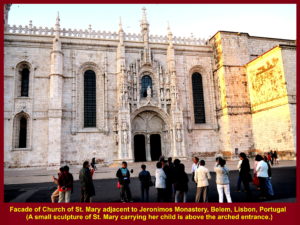
The southern entrance of the Church of St. Mary that is adjacent to Jeronimos Monastery in Belem, Lisbon
Western Entrance of the Church of St. Mary
The western entrance of the Church of St. Mary is also beautifully decorated with statuettes of saints.
Western Entrance of the Church
Interior of the Church of St. Mary
The nave in the church is long and the ceiling is high.
Interior of the Church
St. Mary Chapel in the Church
There is a chapel in the church that is dedicated to St. Mary. The worshipers believed that St. Mary brought back the sailors home, safely, during the “Age of Discoveries” from 15th. until 17th. Century.
St. Mary Chapel in the Church
Tombs of Great Portuguese Figures
In the church there are tombs of famous figures and royal members, such as the tombs of Vasco da Gama(1460-1524) who discovered a sea route to India in 1498, Luis Vaz de Camoes(1524-1580) who was a famous Portuguese writer glorifying the triumphs of Vasco da Gama, King Manuel I(1469-1521) and King Sebastian(1557-1578) to name a few.
Tomb of Vasco da Gama(1460-1524)
Tomb of Luis Vaz de Camoes(1524-1580)
Archaeological and Maritime Museums
In the west wing of Jeronimos Monastery is a long building that houses the National Archaeological Museum and Maritime Museum now.
Monument to Discoveries, Belem, Lisbon
Then we left Jeronimos Monastery and went to see a huge monument erected on the riverbank of River Tagus in 1939. It is a few hundred metres from the monastery.
It is known as Monument to Discoveries created in memory of the brave Portuguese navigators who went overseas to discover new foreign lands in the 15th.-17th Century period.
It looks like a caravel, a Portuguese traditional ship, carrying the Portuguese people to new foreign lands in South America, Africa and South Asia.
Monument to Discoveries
Close-up of Monument to Discoveries
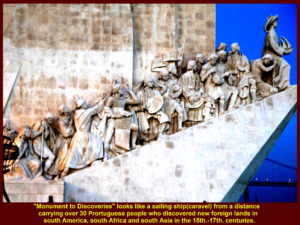
Monument to Discoveries that looks like a caravel carrying brave Portuguese navigators to new foreign lands
Maps of Portuguese Discoveries
On the floor in front of the Monument to Discoveries, there are two large maps. One is showing the places and years in America and Africa, and the other South Asia discovered by the Portuguese navigators in the 15th.-17th. Century period.
Portuguese Discoveries in Africa
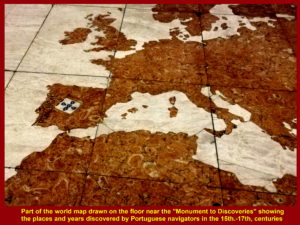
Map on the floor in front of the Monument to Discoveries showing the places and years of Portuguese discoveries in America and Africa
Portuguese Discoveries in South Asia
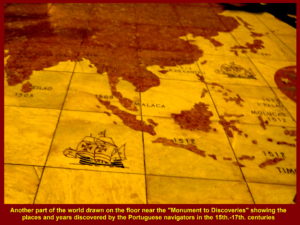
Map of Asia on the floor in front of the Monument to Discoveries showing the places and years of Portuguese discoveries in South Asia
View of the Monument to Discoveries, 25th. April Bridge and Statue of Jesus the King
Standing at a spot on the bank of River Tagus, a visitor can see three main structures, viz. Monument to Discoveries on the left, 25th. April Bridge over River Tagus and large, white Statue of Jesus the King in the distance on the right.
Monument, Bridge and Statue
25th. April Bridge
The 25th. April Bridge is a 2277 metre-long suspension bridge that looks like the one in San Francisco in California. It has two decks. The upper deck carries six car-lanes and the lower one carries a double track railway.
When the bridge was opened in 1966, it was called Salazar Bridge. Then in 1974 it was renamed “25th. April Bridge” in commemoration of the Carnation Revolution. The revolution was a military coup organized by the Military Forces Movement to overthrow the authoritarian regime of Estado Nova on 25th. April 1974.
Tower of Belem
A 30 metre-high fortress was built on an islet in River Tagus in Belem in the early 15th. Century to protect Lisbon from being invaded by Spain or France. Built in Portuguese Manueline style, it is known as Tower of Belem or Tower of St. Vincent. Owing to the deposit of soil in River Tagus, the fortress is now seen to be on the bank of the river.
In 1983 Tower of Belem was designated as a UNESCO World Heritage site due to its important role it played in the Portuguese Age of Discoveries.
Tower of Belem
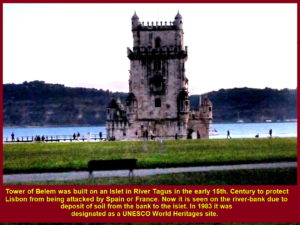
Tower of Belem built in the early 15th. Century to protect Lisbon from being attacked by France or Spain.
Sunset at Belem, Lisbon
It was sunset when we were going to leave Belem, a historical maritime place in Lisbon.
Before we left Belem, we had a last look at the river-mouth of River Tagus in the west. In the distance, we saw a silhouette of a larger fortress against the colourful sky at sunset. It is near the port of Lisbon.
Sunset at Belem
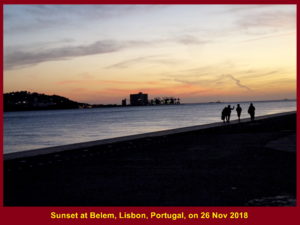
Sunset at Belem, Lisbon, and silhouette of a fortress, Sao Juliao da Barra, at the mouth of River Tagus
Fortress of Sao Juliao da Barra
That fortress is known as Sao Juliao da Barra. In 1556 King John III of Portugal(1502-1557) ordered the fortress to be constructed at the mouth of River Tagus to protect the Lisbon port and city from being attacked by foreign invaders.
Soon we left Belem for dinner and stayed at a hotel for a night, Hotel Leziria Parque, in Lisbon.
Hotel Leziria Parque, Lisbon
Next Destination
We would be going to Seville in Spain the following day. It is 450 km south-east of Lisbon and the journey would take 4 hours 30 minutes.
Previous(Porto) / Home / Next(Seville)
Places visited during Spain & Portugal Tour(22 Oct-02 Nov 2018):
Toledo Madrid Salamanca Porto Lisbon Seville Cordobo Granada Valencia Barcelona
Spain & Portugal Travel Part VI: Seville
Spain & Portugal Travel Part VI: Seville
Seville
Day 6 Saturday, 27 October 2018
On this day, we left Lisbon in Portugal in the morning and headed for Seville in Spain which is located 450 km in the south-east. It might take 4 hours and 30 minutes to reach the city.
Map showing the location of Seville in Spain
Lunch at Badajoz, Spain
After travelling over two hours from Lisbon in Portugal, we stopped at Badajoz in Spain for lunch at a restaurant known as El Chozo Extremeno. Badajoz is about 226 km east of Lisbon and near the Spain-Portugal border.
El Chozo Extremeno Restaurant
One of the Dishes
Grilled chicken with potato was one of the dishes served at the restaurant.
Grilled Chicken at the Restaurant
Photos of Tourmates for Group Album
At the restaurant, I had the chance to take photos of all my tourmates, as shown below.
After lunch in Badajoz, we continued our journey to Seville in the south-east, another 210 km to go.
Manuel, the Seville Tour Guide
When we reached Seville, it was late in the afternoon and we met Manuel, a local tour-guide. Fearing that the Seville Cathedral might close soon, we walked together to the cathedral, quickly.
Manuel, a Seville tour-guide
Seville Cathedral
When we reached the cathedral, we were relieved to be told that we had enough time to see the cathedral.
Seville Cathedral or Cathedral of Saint Mary of the See, a Roman Catholic church, is the largest Gothic Church, and 3rd. largest church in the world. It was built from 1401 until 1528 on the site of a Moorish mosque retaining some Moorish parts of the old mosque.
Seville Cathedral
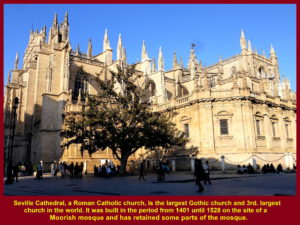
Seville Cathedral built from 1401 until 1528 is the largest Gothic church and the 3rd. largest church in the world.
Plan of Seville Cathedral
Doors of the Cathedral of Seville
Cathedral of Seville has several large doors such as Door of Conception, Door of Assumption and Christopher Columbus Door or Prince Door, to name a few.
Below are photos showing the three mentioned doors.
Door of Conception
Door of Assumption
Christopher Columbus Door or Prince Door
Giralda, the Bell Tower of Seville Cathedral
Adjacent to Seville Cathedral is a tall bell tower that is known as Giralda.
Giralda was converted from a Moorish mosque’s minaret and is 105 metres high. Visitors can go up the tower to have a breathtaking view of the old town of Seville.
Giralda, the Bell Tower
Courtyard of Seville Cathedral
In front of Seville Cathedral is a courtyard which is full of orange trees that make the place shady and cooling.
There is an exit door known as Door of Forgiveness or Pardon which is opposite the Door of Conception of the cathedral.
Door of Forgiveness or Pardon
Outside the Door of Forgiveness or Pardon
The outside of the Door of Forgiveness retains the Moorish features of the former mosque.
Outside Door of Forgiveness or Pardon
Interior of Seville Cathedral
We entered Seville Cathedral through the Door of Conception.
The interior of the cathedral is large. Its length is 117 metres, width 76 metres and the height of the ceiling 42 metres.
Large Interior of the Cathedral of Seville
42 metre-high ceiling
Stained Glass Windows
There are some colourful stained glass windows that make the interior of the cathedral beautiful but sombre. They were made between 16th. and 19th. Century.
Photos below show some of them each depicting a religious scene.
Chapels in Cathedral of Seville
There are 80 chapels in the cathedral. Some have altarpieces that are stunning as shown in the photos below.
Main Chapel(Capilla Mayor)
Main Chapel has the most awesome altarpiece. It is a large gold-gilded, intricate, Gothic woodcarving that depicts 45 scenes of the lives of Christ and Virgin Mary.
Main Chapel(Capilla Mayor)
Chapel of St. Mary
This chapel has a silver altar and a painting of St. Mary.
Chapel of St. Mary
Chapel of Crucifixion
This chapel has an altar of a wood-carving of Christ crucified on a cross.
Chapel of Crucifixion
Chapel of the Virgin
This chapel has an altar of Virgin Mary surrounded by statuettes of saints.
Chapel of the Virgin
Tombs of Important Persons in the Cathedral of Seville
There are several tombs in the Cathedral of Seville belonging to some Spanish kings, royal members, important religious figures and navigators.
Below are photos showing some tombs in the cathedral.
Tomb of Christopher Columbus
The tomb of Christopher Columbus is the most eye-catching one in the cathedral. His tomb is held aloft by four figures. These figures are allegoric representing the four Spanish kingdoms during Columbus’ life, i.e. Castile, Aragon. Navara and Leon.
Christopher Columbus(1451-1506) was an Italian explorer who discovered America in 1492. His four voyages across the Atlantic Ocean were sponsored by the Spanish kings. When he died in 1506 his was buried in Seville Cathedral.
Tomb of Christopher Columbus
Tomb of Cardinal Sir Juan Cervantes(1380-1453)
Another tomb in the cathedral is that of Cardinal Sir Juan Cervantes(1380-1453). Born in Seville, he was made a Catholic Church’s cardinal in 1426 by Pope Martin V(1369-1431).
Tomb of Cardinal Sir Juan Cervantes
Other Tombs
Other important Spanish figures were buried in a special place in the Cathedral of Seville
A Spacial Burial Place in the Seville Cathedral
Priceless Paintings
There are many priceless paintings in the Cathedral of Seville. Some are displayed in rooms and others in chapels, as shown in the photos below.
Paintings in one of the rooms
Paintings: “Baptism of Christ” & “Vision of St. Anthony of Padua”
In a chapel, there are two paintings on a wall. The top painting shows the “Baptism of Christ” and the bottom one the “Vision of St. Anthony of Padua”.
“Baptism of Christ” & “Vision of St. Anthony of Padua”
Painting: “Saints Justa and Rufina”
In another chapel, there is a painting of “Saints Justa and Raufina”. They were martyred for refusing to worship the image of Goddess Venus.
“Saints Justa and Rufina”
Later, we came out of the Seville Cathedral and spent some time looking around outside the cathedral.
General Archive of the Indies
We saw a white building that looks like a palace.
It was built in Spanish Renaissance style in the 16th. Century and known as General Archive of the Indies. It houses important documents of the history of the Spanish Empire in the Americas and the Philippines.
General Archive of the Indies
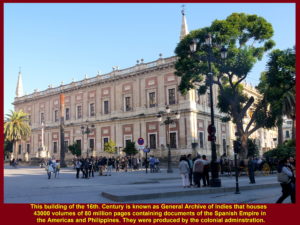
General Archive of the Indies houses 43000 volumes of 80 million pages of the history of the Spanish Empire in the Americas and the Philippines.
MetroCentro Tram System in Seville
Then we saw a modern tram arriving at the station near the Cathedral of Seville.
There is a MetroCentro Tram System running a distance of 1.4 km from Plaza Nueva to San Bernado. There are 3 stations in between them, including the station near the Cathedral of Seville.
MetroCentro Tram System
Tourists arriving at Seville
Horse-Drawn Carriages
In the area around Seville Cathedral, we saw many horse-drawn carriages carrying tourists.
Horse-drawn carriages are in demand by the tourists in Seville. It is a convenient means of going round the old town to see historical buildings, monuments and gardens or squares.
Horse-drawn carriages
Tour Group Photo near Seville Cathedral
One photo was taken near the Seville Cathedral for the tour group album, as shown below.
Seville Bullring
Having visited the Seville Cathedral and the area around it, we walked to a Seville bullring nearby.
Seville Bullring has a 12000 seating capacity near the cathedral. It is known as Plaza Real Maestranza built in Baroque style from 1749 until 1765. The regular bullfighting season is from March until September, annually.
Seville Bullring
Bronze Statue of Bullfighter
A bronze statue of a bullfighter can be seen outside the bullring. It is a statue of Curro Romero(1933-2018) who was a well-known Spanish bullfighter. He started his professional career at the age of 21 and retired at 66.
Statue of Bullfighter
Another Tour Group Photo in Seville
Another photo was taken in front of the Seville bullring, Plaza Real Maestranza, for the Tour Group album.
Hotel Sevilla Congresos, Seville
After visiting the cathedral and bullring, we went for dinner and stayed at a hotel, Hotel Sevilla Congresos, for a night in Seville.
Next Destination
The following day, Sunday, 28 October 2018, we would be going to Cordoba which is 141 km east of Seville. The journey would take about 2 hours.
Previous(Lisbon) / Home / Next(Cordobo)
Places visited during Spain & Portugal Tour(22 Oct-02 Nov 2018):
Toledo Madrid Salamanca Porto Lisbon Seville Cordobo Granada Valencia Barcelona
Spain & Portugal Travel Part VII: Cordoba
Spain & Potugal Travel Part VII: Cordoba
Cordoba
Day 7 Sunday, 28 October 2018
On this day, we were going to visit Cordoba. We left Hotel Sevilla Congresos in Seville in the morning and travelled 141 km east to Cordoba. The journey would take 2 hours.
Map showing the location of Cordoba
On arrival at Cordoba in the morning, we went to see a Roman bridge.
Writer and wife at Roman Bridge
Roman Bridge of Cordoba
The Roman Bridge of Cordoba was built in the 1st. Century B.C.. It is 247 metres long and 9 metres wide crossing River Quadadquivir.
Roman Bridge of Cordoba
Mosque-Cathedral in the Distance
From the bridge an ancient Roman Catholic church can be seen in the distance. It is commonly known as Mosque-Cathedral.
Mosque-Cathedral on the right in the distance
Mosque Becoming Roman Catholic Church
A mosque was built in the Muslim Umayyad Dynasty(929-1031). Later it was converted to a Roman Catholic church when a Spanish Catholic monarch , King Ferdinand III(1199-1252), captured Cordoba in 1236. It is therefore known as Mosque-Cathedral.
Mosque-Cathedral
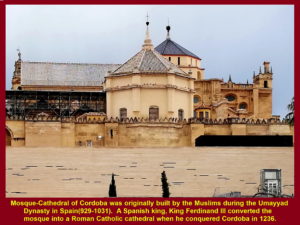
Mosque-Cathedral was originally a mosque during the Umayyad Dynasty. It was converted into a Roman Catholic church when King Ferdinand III captured Cordoba in 1236.
Mosque-Cathedral seen from Courtyard of Orange Trees
Back Wall of Mosque-Cathedral
Cordoba Main Gate or Roman Bridge Gate of Cordoba
The old town of Cordoba has a large, high gate that looks like the triumphal arch known as Arc de Triomphe in Paris.
Located near the Roman Bridge, it was built in Renaissance style in the 16th. Century replacing the old one. It was the main gate into the old town and is known as Roman Bridge Gate. The wall connected to the gate is already gone.
Main Gate or Roman Bridge Gate
Bell-Tower of Mosque-Cathedral
We entered the old town of Cordoba through the gate and visited the Mosque-Cathedral.
The cathedral has a bell-tower. It was converted from a mosque’s minaret when Cordoba was captured by a Holy Roman Catholic monarch, King Ferdinand III, in 1236.
Bell-Tower of Mosque-Cathedral
The Main Gate of Mosque-Cathedral
Mosque-Cathedral has retained many parts of the former mosque, including the main gate, walls and the building.
Main Gate of Mosque-Cathedral
Wall of Mosque-Cathedral
Almodovar Gate
Near the Mosque-Cathedral there is a partial wall with a gate known as Almodovar Gate. It was built during the Muslim rule in Cordoba(920-1031).
Almodovar Gate
Cordoba City Walls
Walls were built round Cordoba Old Town during the Muslim rule in Cordoba(929-1031) during the Umayyad Dynasty. Now we can see some remaining parts of the wall.
Old Walls in Cordoba Old Town
Sandstone Wall
An old remaining wall that is not restored exposes its sandstone blocks in the Cordoba old town.
Old Sandstone Wall
Lunch at Restaurante China Town
Before we continued walking to the next landmark, Tendillas Square, in Cordoba Old Town, we stopped for lunch at a Chinese restaurant, Restaurante China Town.
Restaurante China Town
Writer’s Lunch
After lunch, we walked to the square, Tendillas Square. On the way, we saw a church called St. Nicholas Church.
St. Nicholas Church, Cordoba
St. Nicholas Church is a parish church. It was built in Gothic-Mudejar style in the 13th. Century after the end of the Muslim rule in Cordoba in 1031. Later in the 16th. Century, it was changed to Baroque style.
St. Nicholas Church
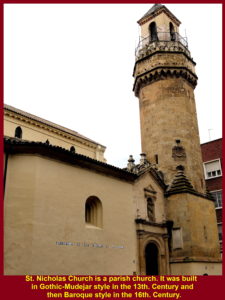
St. Nicholas Church is a parish church. It was built in Gothic-Mudejar style in 13th. Century and then Baroque style in 16th. Century.
Bronze Statue of an Unknown Lady
Then we came across an interesting bronze statue of an unknown lady reading a newspaper, as shown in the photo below.
Statue of an Unknown Lady
Roman Temple
Later, we came across the location of a Roman temple.
Roman temples were built around 50 A.D. in Cordoba. One was discovered in 1950s in the old town and columns were erected to show its location, as shown in the photo below.
Location of a Roman temple
Tendillas Square
Soon we came to the largest square in Cordoba known as Tendillas Square.
It is a public place where social and political activities are carried out, frequently.
Located in the centre of the busy business area of the Cordoba City, it is surrounded by large buildings, including Union and Phoenix Building owned by an insurance company of the same name, Casa Colomera built for the counts of Colomera in 1928 and House of Enriquez Barrios built for the mayor of Cordoba, Enriquez Barrios(1913-1916), in 1928.
Tendillas Square
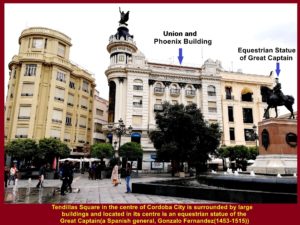
Tendillas Square is surrounded by large buildings and an equestrian statue of the Great Captain is in the centre.
Casa Colomera and House of Enriquez Barrios
Equestrian Statue of the Great Captain
Erected in the centre of the square in 1927 is an equestrian statue of the Great Captain, General Gonzalo Fernandez(1453-1515).
Gonazal0 Fernandez was a Spanish general and statesman who led successful military campaigns during the Conquest of Granada and the Italian Wars. Owing to his military victories and widespread popularity, the Spanish people called him “El Gran Capitan” or the “The Great Captain”.
Equestrian of “The Great Captain”
While walking away from the Tendillas Square, we came across a few old churches, as described below.
Church of St. Paul, Cordoba
Church of St. Paul was built in Baroque style in the 14th. Century dedicating to St. Paul.
In 2006, it became a minor basilica.
Front Gate to Church of St. Paul
Facade of the Church of St. Paul in Baroque Style
Interior of the Church of St. Paul
Chapel of Christ and Virgin Mary in the Church
Basilica of the Oath of St. Rafael
This minor basilica in Cordoba was built in the 18th. Century. It was built because St. Rafael(an archangel) promised Father Roeles that he would protect the city in 1578.
Facade of Basilica of the Oath of St. Rafael
Side view of Basilica of the Oath of St. Rafael
Church of St. Lawrence(San Lorenzo)
Church of St. Lawrence was built in the Romanesque-Gothic style between 1244 and 1300. It has a bell tower and a large rose window.
Church of St. Lawrence
Church of Our Lady Grace
Church of Our Lady Grace was the last church we saw in Cordoba. It is a Roman Catholic church built in Baroque style in the 17th. Century. It was founded by San Juan Beautista de la Concepcion(1561-1613) who was a religious and ascetic writer.
Church of Our Lady Grace
Restaurante China Town, Cordoba
Having seen the landmarks in Cordoba Old Town, we went for lunch at a Chinese restaurant, Restaurante China Town, in the town.
Hotel Macia Condor, Granada
After lunch we left for Granada which is 208 km away and the travelling time would take 2 hours and 30 minutes.
On arrival at Granada, we checked in at a hotel, Hotel Macia Condor.
Dinner at a Granada restaurant, El Tempo del Flamenco
In the evening we left the hotel and walked over 500 metres to a restaurant known as El Tempo del Flamenco for dinner and Flamenco show.
The interior of the restaurant was small and looked like a cave that was white-washed. There was a semi-circular stage in front for the Flamenco show.
Flamenco Show Stage
Sumptuous Dinner
Tour group were enjoying the sumptuous dinner at the restaurant before the show started.
Dinner at El Tempo del Flamenco Restaurant
Dinner before Flamenco Show started
Food for dinner provided by the restaurant
Hard-rock Bread
Salad and Slices of Sausage
Chicken Meat
Fried Eggs with Slices of Bacon
Fried Mixture of Potato and Eggplant
Flamenco Show at the Restaurant
After the sumptuous dinner, the Flamenco show started with a handsome man singing a traditional Flamenco song to the accompaniment of the sounds from guitar, cajon drum box and clapping.
Solo Flamenco singer
Flamenco Dancing
Then ladies in Flamenco dresses took turn to dance. They danced with expressive movements of their arms, bodies and legs. Their legs stomped on the stage, rhythmically.
A Solo Flamenco Dancer
Another Solo Dancer
Two Flamenco Dancers dancing together
A Solo Flamenco Guitarist
After enjoying the Flamenco show, we walked back to the hotel, Hotel Macia Condor, and retired for a night.
Change of Coach Drivers
First Coach Driver, Sergio
When we arrived in Cordoba City, we had to bide farewell to our first coach driver, Sergio. He had driven us, safely, from Madrid to Cordoba to see heritage sites for four days.
Saying goodbye to Sergio, the first coach driver
Second Coach Driver, Juan
We welcomed our second coach driver, Juan, who would drive us from Cordoba to Barcelona which was our final destination for the last four days in Spain.
Welcoming Juan, the second coach driver
.Garden of Triumph and Monument to the Triumph of Virgin
On the following morning of Monday, 29 October 2018, I walked 200 metres from the hotel, Hotel Marcia Condor, to a garden.
It is a large garden known as Garden of Triumph(Granada).
Garden of Triumph and Monument to the Triumph of Virgin
Past History of Garden of Triumph
Originally, the garden was a large Arab cemetery in the 13th. Century. Later, it was reduced in size when part of it was urbanized in 16th. Century due to increase in population.
The garden was used as a place for execution of Spanish patriots during the French rule from 1808 until 1813, and it remained so until 1840.
In the 19th. Century the garden was beautified and a tall monument known as Monument to the Triumph of Virgin was erected in its centre.
Next Destination
Then we travelled to Alhambra Complex, a historical heritage site on the outskirts of Granada.
Previous(Seville) / Home / Next(Granada)
Places visited during Spain & Portugal Tour(22 Oct-02 Nov 2018):
Toledo Madrid Salamanca Porto Lisbon Seville Cordobo Granada Valencia Barcelona
Spain & Portugal Travel Part VIII: Granada
Spain & Portugal Travel VIII: Granada
Granada
Day 8 Monday, 29 October 2018
On this day, we were going to visit some historical sites in the outskirt of Granada City.
Map showing the location of Granada in Spain
Ramon, a Granada tour guide
In the morning, we left Hotel Macia Condor in Granada City and headed to a hilly region known as Alhambra on the outskirts of the city.
Ramon brought us to a historical site known as Alhambra Complex.
Ramon, a Granada tour guide
Alhambra Complex in Granada, Spain
Alhambra Complex consists of three main parts, i.e. Alcazaba Fortress, Generalife Garden and Generalife Summer Palace.
Diagram showing the Alhambra Complex in Granada
Alhambra Complex Visit
Our tour-manager, Jeff Lee, bought tickets for us to enter Alhambra Complex. Then we f0llowed the guide and walked for several minutes to a fortress, Alcazaba Fortress, built during the Muslim rule(1230-1492).
Entrance to Alhambra Complex
Part of Alcazaba Fortress wall
On the way to Alcazaba Fortress, we saw part of the fortress wall on a high ground.
Part of Alcazaba Fortress wall, Alhambra Complex
Tower of Justice, the main entrance to Alcazaba Fortress
To reach Alcazaba Fortress, we entered the main entrance to the fortress known as Tower of Justice.
Tower of Justice, the main entrance to Alcazaba Fortress
Charles V Palace
While walking to the fortress, we stopped at a palace, Charles V Palace.
Tour group walking to Charles V Palace, Alhambra Complex
Charles V Palace was built for a Holy Roman Emperor, Charles V(1500-1558), in the 15th. Century. But he had no chance to stay at the palace as it was completed in the 20th. Century.
The palace now houses two museums, viz., Museum of Alhambra and Museum of Fine Arts of the Nasrid Dynasty(1230-1492)
Palace of Charles V
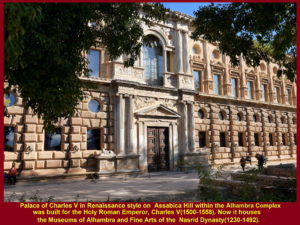
Palace of Charles V(1500-1558) was built in the 15th. Century and completed in the 20th. Century. No monarchs had ever stayed at the palace as its construction was not completed until the late 20th. Century.
There is a circular courtyard in the centre of Palace of Charles V.
A circular courtyard in the centre of Palace of Charles V
Alcazaba Fortress
Then we walked on and, finally, we arrived at Alcazaba Fortress.
The fortress located on a small plateau overlooking Albaicin City is large and its facade has two tall, majestic-looking towers.
It was built in the 13th. Century by the Muslim rulers who made it as a military stronghold and their residence, too.
Facade of Alcazaba Fortress
Wide Ramparts and Tall Watch-Towers
The ramparts of the fortress are wide and a few watch-towers are very high.
There were some soldiers in one of them watching the visitors below, while we were there.
Wide rampart and Tall Towers of Alcazaba Fortress
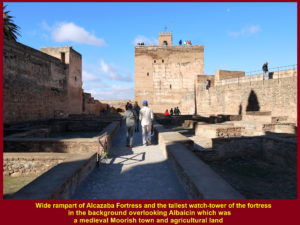
Wide rampart of Alcazaba Fortress in the foreground and the tallest watch-tower of the fortress in the background
Tallest watch-tower of Alcazaba Fortress
Writer and wife at Alcazaba Fortress
While my wife and I, together with our tourmates were at the fortress, we were awe-stricken by its immense size.
Besides, the sights of the Albaicin City, agricultural land and the Sierra Nevada mountain range seen in the distance from Alcazaba Fortress were breathtaking.
Writer and wife at Alcazaba Fortress
Breathtaking Sights from Alcazaba Fortress
Albaicin District
Albaicin’s agricultural land
Sierra Nevada Mountain Range
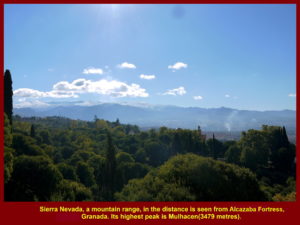
Sierra Nevada, a mountain range in the distance as seen from Alcazaba Fortress. The highest peak is Mulhacen(3479 metres).
St. Mary Church, Alhambra
Later, we left Alcazaba Fortress, passed Charles V Palace again and came across a small Roman Catholic church, St. Mary Church. It was built on a demolished mosque site in the 15th. Century
St. Mary Church
Ruins of Living Quarters for Soldiers
Further down the road from St. Mary Church, we saw a place where remains of the living quarters for soldiers during the Muslim rule were preserved.
Remains of living quarters for soldiers
Generalife Garden
Soon, we came to another part of the Alhambra Complex, i.e. Generalife Garden.
It was created in the 13th. Century during the Moorish or Muslim rule.
The garden is shady and cooling, and its trees are neatly trimmed.
It is a garden that is well-taken care of.
Entrance to Generalife Garden
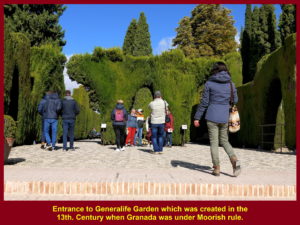
Entrance to Generalife Garden in Alhambra Complex that was created in the 13th. Century during the Moorish rule.
Manicured Generalife Garden
Sight of plants in Generalife Garden
Part of Alhambra Complex
As we were walking away from the garden to the Summer Palace of Generalife, we saw the part of Alhambra Complex where we had visited Alcazaba Fortress, Charles V Palace and St. Mary Church.
Part of Alhambra Complex
Summer Palace of Generalife
Soon we arrived at the Summer Palace which was for the Muslim rulers during the Nasrid Dynasty (1230-1492).
To enter the palace, we walked up a narrow stairway and saw a garden in front of the building.
Entrance of Summer Palace of Generalife
Long Garden and Islamic Calligraphy
The garden is long with walls round it. In the middle, there is a long rectangular pond with small fountains. On the inner walls of the porch of the palace, Islamic calligraphy has been written.
Summer Palace of Generalife
Islamic Calligraphy
Shady Path in Generalife
Later, we left the Summer Palace of Generalife, walked along a shady path and exited the Alhambra Complex at a gate where a road went down to Albaicin City.
Shady Path in Generalife
Exit Gate of Alhambra Complex
Albaicin Town
As we were walking down the curved, narrow and steep road from the gate to Albaicin Town, we noted that three storeyed old buildings were on both sides of the road.
Albaicin Town was inhabited by the Moors during the Nasrid Dynasty(1230-1492). It still has some of the Moorish features, e.g. narrow, winding roads, Moorish buildings and traditional trades.
Narrow, Winding Road
Busy Albaicin Town
Albaicin was declared as a UNESCO World heritage site in 1984.
Some of the streets in the town are wide and busy.
A Typical Street in Albaicin Town
A Busy Street
Estrella Oriental Restaurant, Granada
In the afternoon, we left Albaicin Town and went to Granada Old Town to have lunch at a Chinese restaurant known as Estrella Oriental Restaurant.
Restaurante Chino, Granada
Some food served at Estrella Oriental Restaurant, Granada
Fried Chicken
Fish Fillets
Slices of Cucumber
Fried Egg
Hotel Port Elche, Alicante
After the delicious lunch, we left Granada and travelled 350 km east for 4 hours to Alicante. When we arrived at Alicante , we at Hotel Port Elche for a night.
.Hotel Port Elche, Alicante
Next Destination
Our next destination on the following day, Tuesday, 30 October 2018, would be Valencia. It is 165 km in the north-east and the travelling time would be 2 hours.
Previous(Cordoba) / Home / Next(Valencia)
Places visited during Spain & Portugal Tour(22 Oct-02 Nov 2018):
Toledo Madrid Salamanca Porto Lisbon Seville Cordobo Granada Valencia Barcelona
Spain & Portugal Travel Part X: Barcelona
Spain & Portugal Part X: Barcelona
Barcelona
Day 10 Wednesday, 31 October 2018
On this day, we were going to visit some heritage sites in Barcelona which has a population of about 1.6 millions, the second most populous city in Spain.
(Barcelona was the last destination of our Spain and Portugal tour.)
Map showing the location of Barclona
In the morning, we left Sercotel Ciutat de Montcada Hotel and went to visit a famous park known as Park Guell. It is on a forested hill, Carmel Hill, which is on the outskirts of Barcelona City.
Eusebi Guell(1846-1918)
The Park Guell land, originally, belonged to a rich Spanish entrepreneur, Eusebi Guell(1846-1918).
He commissioned Antoni Gaudi(1852-1926), a famous Spanish architect, to develop an estate on the land for the rich people of Barcelona, but the project failed.
Anyway, Gaudi had created a sensational garden on the land known as Park Guell, using Catalan Modernistic design and calling it Park Guell.
In 1923, Guell’s family gave the land away to the city.
Antoni Gaudi(1852-1926)
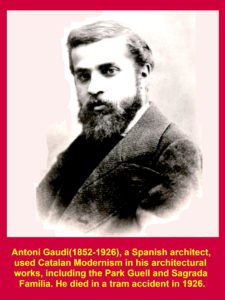
Antoni Gaudi(1852-1926) was a Spanish architect whose unique architectural works included Park Guell, Sagrada Familia and Casa Mila.
Park Guell
Park Guell is a large, beautiful garden created by Antoni Gaudi(1852-1926) from 1900 until 1914. The picture below shows the Park Guell.
Picture of Park Guell
Marianna, the Barcelona Tour Guide
When we arrived at Park Guell, a local tour guide, Marianna, greeted us and brought us round at Park Guell.
Barcelona Tour Guide
Forested Carmel Hill
It was raining lightly when we were at Park Guell.
Walking up Carmel Hill to Park Guell
Nature Square, the roof of Hypostyle
At the park, we walked up to the roof of Hypostyle Hall which is a flat open space known as Nature Square. It is a place where social and political activities are sometimes held.
Nature Square
Views of Guell Park from Nature Square
From Nature Square, visitors can see two different, unique buildings below, viz. Casa de Guarda that houses Park Guell Museum and Porter’s Lodge that receives visitors. The latter has a tall, cylindrical tower with a large cross atop.
Casa de Guarda and Porter’s Lodge
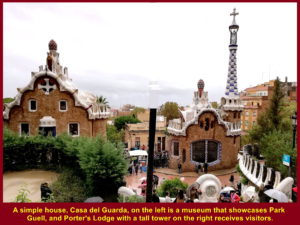
Casa de Guarda(left), a house for Park Guell museum, and Porter’s Lodge(right) for receiving visitors
View of Barcelona City
Visitors can also see a panoramic view of Barcelona City and Mediterranean Sea beyond in the distance from Nature Square at Park Guell, as shown in the photo below.
Barcelona City and Mediterranean Sea
Antoni Gaudi’s Residence
Antoni Gaudi lived in a red house at Park Guell for 20 years from 1906 until 1825, as shown in the photo below.
Now it is a museum exhibiting his and his co-workers’ belongings, like furniture, paintings, sculptures, drawings and other objects.
Antoni Gaudi’s Residence
Hypostyle Hall
There are steps going up to the Hypostyle Hall. The roof of the hall is supported by 86 high, strong columns. On top of the roof is Nature Square, an open-air square.
Steps to Hypostyle Hall
86 Columns in Hypostyle Hall
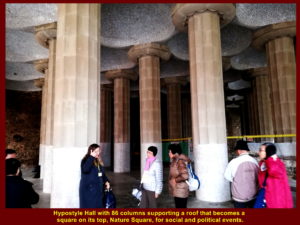
Hypostyle Hall with its roof supported by 86 high, strong columns. On top of the roof is Nature Square for social and political activities.
Portico of Washerwoman
There is a covered walkway or portico near the Hypostyle Hall. As one of its pillars has a sculpture of a washerwoman, the walkway is therefore named as Portico of Washerwoman.
Portico of Washerwoman
Sculpture of a washerwoman on a pillar
Underside of Portico of Washerwoman
The underside of Portico of Washerwoman looks like the underside of a dinosaur.
Underside of a Dinosaur
Spiral Columns
Another part of the portico has spiral columns.
Spiral Columns of Portico
Sagrada Familia
After visiting Park Guell, we went to the centre of Barcelona City to see an awesome basilica that is known as Sagrada Familia.
Sagrada Familia in centre of Barcelona City
Plan of Sagrada Familia
Sagrada Familia
Sagrada Familia is a Roman Catholic church designed by Antoni Gaudi, too. Construction of the basilica started in 1882 and it is expected to be completed in 2026, taking 144 years to complete.
Sagrada Familia
Nativity Facade
The front of Sagrada Familia is known as Nativity Facade that is decorated with ornate sculptures depicting the scenes of the birth of Jesus Christ.
Nativity Facade
Lower Part of Nativity Facade
Lower part of Nativity Facade is decorated with statuettes of religious figures involved in the activities related to the birth of Jesus Christ.
Lower Part of Nativity Facade
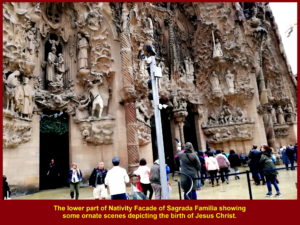
Lower part of Nativity Facade with small ornate sculptures depicting the activities related to the birth of Jesus Christ
Interior of Sagrada Familia
Interior of Sagrada Familia is large and high. Below are photos showing some parts of the interior.
Nave and Altar
Nave
West Transept
East Transept
Narthex
Stained Glass Windows
There are several stained glass windows in the cathedral, making the interior of the cathedral colourful and sombre. Each glass depicts a religious scene.
Stained Glass Window
Stained Glass Window
Stained Glass Window
Passion Facade
The back of Sagrada Familia is known as Passion Facade. It is decorated with statuettes of religious figures involved in the final short period of Jesus Christ’s life, i.e. from the time of the Last Supper until the time of the Ascension of Jesus Christ.
Passion Facade
Lower Part of Passion Facade
Peter’s Three Denials
Scenes of Crucifixion and Ascension of Jesus Christ
Glory Facade
The Glory Facade of Sagrada Familia Cathedral is still under construction and will be ready in 2026. The photo below shows the Glory Facade on the left handside of the Cathedral which is under construction.
Glory Facade Under Construction
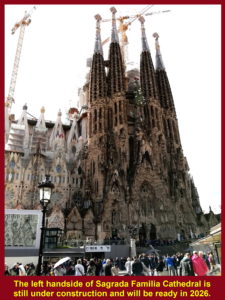
The left handside of Sagrada Familia Cathedral is still under construction and will be ready in 2026.
Sunshine in Barcelona
It was good sunshine when we visited Sagrada Familia Cathedral in Barcelona. Our young tourmates took the opportunity to enjoy the Spanish sunshine outside the cathedral.
Casa Mila designed by Antoni Gaudi(1852-1926)
Casa Mila is another building in Barcelona City that was designed by Antoni Gaudi(1852-1826). Built in Valencian Modernistic style between 1906 and 1912, it is now a cultural centre opened to tourists and used for conferences and other purposes.
Casa Mila(La Pedrera)
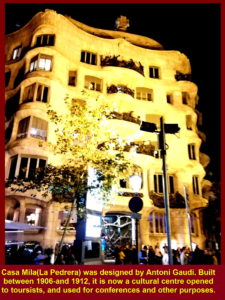
Casa Mila was designed by Antoni Gaudi. Built between 1906 and 1912, it is now a cultural centre opened to tourists, and used for conferences and other purposes.
Then we left the spectacular Sagrada Familia and went to Barcelona Cathedral which is 2 km south of Sagrada Familia.
On the way, we passed by the Barcelona bullring.
Barcelona Bullring
Barcelona bullring, La Monumental, was opened in 1914 for bullfighting until 2012 when the law of banning the activity was introduced.
Since 2014 the bullring has been used for sports, concerts and circuses.
Barcelona Bullring
Barcelona Cathedral
When we reached Barcelona Cathedral, we had a look at its exterior only.
Barcelona Cathedral was built in Gothic style from 13th. until 15th. Century. Also known as Cathedral of the Holy Cross and St. Eulalia, it was built in dedication to a young virgin, Eulalia, who suffered martyrdom during Roman times in Barcelona and her body is entombed in the crypt of the cathedral.
Barcelona Cathedral
El Reloj Restaurant
After seeing Barcelona Cathedral, we went to a Spanish restaurant nearby known as El Reloj Restaurant and had seafood for lunch.
El Reloj Restaurant
Some food served by El Reloj Restaurant
Fried rice with Seafood
Fish with Green Peas
Cake for Dessert
Then we moved on to the Barcelona Olympic Stadium(Estadi Olimpic Lluis Companys) which is 6 km south-west of Sagrada Familia.
Barcelona Olympic Stadium
The entrance to the Barcelona Olympic Stadium looks like the triumphal arch, Arch de Triomphe, in Paris, France.
Triumphal Arch
Barcelona Olympic Stadium
Barcelona Olympic Stadium was built in 1927 with a seating capacity of 56000 for the 1929 International Exposition in Barcelona City. In 1992 it held the 25th. Summer Olympic Games.
Barcelona Olympic Stadium
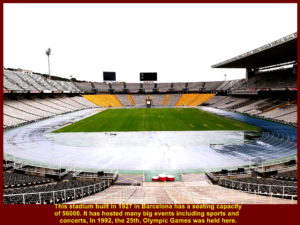
Barcelona Olympic Stadium was built in 1927 with a seating capacity of 56000. In 1992 it held the 25th. Summer Olympic Games.
Writer and wife at Barcelona Olympic Stadium
Having visited the Olympic Stadium, we moved on to another stadium which was for football. Located 8 km south-west of Sagrada Familia, it is known as Barcelona Football Stadium or Camp Nou
Barcelona Football Stadium or Camp Nou
It was opened in 1957 with a seating capacity of 100,000. It is the largest in Europe and 3rd. in the world. It has hosted many grand football competitions, including the final competition of the Summer Olympic Games in 1992, UEFA European competitions and FIFA World Cup.
When the stadium is empty, four large Spanish words in yellow on the seats can be seen, “MES QUE UN CLUB”, meaning “MORE THAN A CLUB”.
Barcelona Football Stadium
Exterior of Barcelona Football Stadium
Barcelona Football Club Players
Camp Nou is owned by a professional Spanish football club known as FC Barcelona which was founded in 1899. It is the most successful club in Spanish football. There are many great players in this club, including Lionel Messi, Luis Suarez and Gerard Pique who are playing, currently.
Below are photos of three of the FC Barcelona players.
Lionel Messi
Luis Suarez
Gerard Pique
Dinner and Hotel in Barcelona
In the evening, we left Camp Nou and went to the Chinese restaurant, Rio Azul Restaurant, again to have the last dinner in Spain.
Rio Azul Restaurant, Barcelona
After dinner we went back to stay at the hotel, Sercotel Ciutat de Montcada, for another night which is 7 km north of Sagrada Familia.
Sercotel Ciutat de Montcada Hotel
Next Destination
On the following day, we would leave Barcelona for home in Malaysia.
Day 11 Thursday, 1 November 2018
In the morning we left the hotel and travelled 20 km south to the Barcelona international airport known as El Prat Airport and checked in early. We would fly back home in Malaysia by the Royal Jordanian airplanes.
Barcelona International Airport(El Prat Airport)
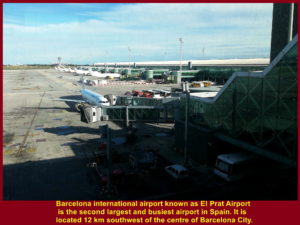
Barcelona International Airport known as El Prat Airport is the second largest and busiest airport in Spain.
Tour group checking in at El Prat Airport
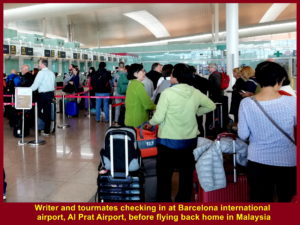
Writer and tourmates checking in at Barcelona international airport, El Prat, before flying back home in Malaysia
Departure for Home
Finally, at 3.35 p.m.(Spain time) we flew off from Barcelona by a Royal Jordanian airline to Amman in Jordan first. It took 4 hours and 25 minutes to fly from Barcelona to Amman which is 3186 km away.
Flight from Barcelona to Amman
Day 12 Friday, 2 November 2018
At Amman Airport we boarded another Royal Jordanian airplane that took us to Bangkok in Thailand which is 6836 km away. The plane took 8 hours and 10 minutes to travel that distance.
Flight from Amman to Bangkok
When the plane arrived at the Bangkok International Airport, some passengers disembarked. An hour later, we continued our journey on the same Royal Jordanian plane from Bangkok to KLIA(airport) in my country, Malaysia. The plane took 2 hours and 10 minutes to travel a distance of 1220 km to KLIA.
Flight from Bangkok to KLIA
Safe Arrival
After travelling for almost a day from Spain to Malaysia, we reached our home, safely.
Conclusion
That was our unforgettable, enjoyable tour in Spain and Portugal.
Acknowledgement
My wife and I would like to thank Chiu Travel Agency, Golden Destinations Travel Agency, Tour Manger{Jeff Lee), Spanish tour guides, Spanish coach drivers and last but not least our tourmates for making our tour a successful, enjoyable and memorable one.
Thanks to Jeff Lee
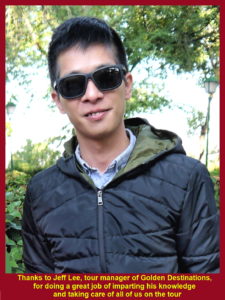
Thanks to Jeff Lee, tour manager of Golden Destinations, for his knowledge and care during the Spanish & Portugal Tour(22.10.2018-2.11.2018)
Places visited during Spain & Portugal Tour(22 Oct-02 Nov 2018):
Toledo Madrid Salamanca Porto Lisbon Seville Cordobo Granada Valencia Barcelona
Writer’s List of Foreign Countries Visited
Writer’s list of foreign countries that he has visited
The map below shows the foreign countries I, Choo Chaw(a Malaysian), have visited from 2003 until 2017.
Click on a country below to read about my travel there:
1. AFRICA
a. Egypt Travel
Egypt Travel Part I :Salah el Din Citadel, Muhammad Ali Mosque, Tahrir Square and Egyptian Museum
Egypt Travel Part II :Valley of the Kings, Hatshepsut Temple and Colossi of Memnon
Egypt Travel Part III :Hot Air Balloons and Karnak Temple Complex
Egypt Travel Part IV :Papyrus Paper-Making, Luxor Temple and Esna Lock
Egypt Travel Part V :Edfu Temple, Kom Ombo Temple and Galabia Party
Egypt Travel Part VI :Abu Simbel Temples and Nubian Village(Elephantine Island)
Egypt Travel Part VII :Unfinished Obelisk, Aswan High Dam and Philae Temple
Egypt Travel Part VIII:Ahmed Hamdi Tunnel, Moon Beach(Ras Sudr), and St. Catherine
Egypt Travel Part IX :Mount Sinai, Catherine’s Monastery and Sharm el Sheikh
Egypt Travel Part X :Sharm el Sheikh
Egypt Travel Part XI :Cairo Food, Saqqara Step Pyramid Complex and Memphis
Egypt Travel Part XII :Great Giza Pyramid Complex and Khan el Khalil Bazaar
South Africa Travel Part I: Air Flight from KLIA to Cape Town, Cape Town Shantytowns
South Africa Travel Part II: Table Mountain, Malay Quarter, Castle of Good Hope. A & V Waterfront
South Africa Travel Part III: Hermanus, Cheetah Outreach, Stellenbosch, Jewel Africa
South Africa Travel Part IV: Duiker Island of Seals, Cape Point, Boulders
South Africa Travel Part V: Cape Town to Johannesburg, Pilanesberg National Park(Game Drives)
South Africa Travel Part VI: Sun City, Union Buildings, Vootrekker Monument
South Africa Travel Part VII: Kruger Museum, Church Square, Melrose Museum, Carnivore Restaurant
South Africa Travel Final Part: Gold Reef City: Gold Mine Museum
2. AUSTRALIA & NEW ZEALAND
Part I: Melbourne/Mornington Peninsula/Phillip Island),
3. ASIA
a. China Travels
i. Beijing, Tianjin, Chengde Travel
Part II: Beijing, Tianjin, Chengde
ii. China Relatives & Ancestral Places(Fujian Province)
Part I: Parents’ China Relatives
Part II: Hanjiang, Meizhou Island
iii. Hong Kong Travel
iv. Macau Travel
Part I: Hangzhou, Suzhou, Wuxi, Nanjing
Part II: Nanjing Bridge, Shanghai City, Shanghai Expo, Hangzhou
vi. Shenzhou, Hezhou, Quilin, Zhaoqing Travel
Part II: Quilin, Yangshuo, Zhaoqing, Shenzhen
vii. Taiwan Travel
Part II: Checheng, Kaohsiung, Taichung, Sanyi, Yehliu, Jioufen
viii. Yunnan Travel
Part I: Kunming, Jiu Xiang, Shilin, Dali
Part I: Tianmen, Zhangjia jie, Wulingyuan, Tianzi, Yuangjiajie
Part II: Dragon King Cave, Shaoshan, Changsha, Macau
b. Indonesia Travels
i. Bali Travel
c. Japan Travel
Part I: Osaka, Kyoto, Hamamatsu
Part II: Owakudani Valley, Mt. Fuji, Tokyo
Part I: Yangon, Bagan, Mount Popa
Part I: Chinatown, Little India
Part II: Malay Heritage, Civic District
Part II: Sokcho, Everland, Dongdaemum, DMZ, Seoul
g. Thailand Travel:
ii. Chiang Mai, Chiang Rai, The Golden Triangle Travel
Part I: Chiang Mai, Chiang Rai, The Golden Triangle
iii. Phuket Travel
iv. Part I: Thailand (from China Ezpedition 2013)
h. Vietnam
Part II: Hoa Lo, Tam Coc, Hanoi
4. Europe:
Part I: Germany, Switzerland, France
Part II: France, Belgium, Holland, England
Part VI: Prague(Czech Republic)
c. Italy Travel
Italy Travel Part I: Rome and Vatican City
Italy Travel Part II : Rome(continued)
Italy Travel Part III: Pisa and Florence
Italy Travel Part V(Final): Verona and Milan
d. Spain & Portugal
Spain Travel Part III: Salamanca
Portugal Travel Part IV: Porto
Portugal Travel Part V: Lisbon
Spain Travel Part VII: Cordoba
Spain Travel Part VIII: Granada
Spain Travel Part IX: Valencia
Spain Travel Part X(Final): Barcelona
5. U.S.A. & Canada
Part I: Philadeiphia, Washington D.C.
Part II: Niagara Falls, Toronto
Part III: Colborne, 1000 Islands, Ottawa
Part VII: Woodbury Common Premium Outlets
Part II: San Francisco, Monterey Bay, Las Vegas
Part V: Premium Outlets(S. California)
Part VII: Hollywood Walk of Fame(Los Angeles)
Part VIII: Universal Studios Hollywood
Part IX: Universal Studios Hollywood Theme Park
THE END (Home)
Egypt Travel Part I: Salah el Din Citadel, Muhammad Ali Mosque, Tahrir Square and Egyptian Museum
Egypt Travel Part I: Salah el Din Citadel, Muhammad Ali Mosque, Tahrir Square and Egyptian Museum
Egypt
Egypt is the second country after South Africa in the continent of Africa that I visited on 13 Dec 2017. It is a country that has an interesting history dating back over 4000 years ago and it was recorded in hieroglyphic writing on tombs and walls of ruined temples.
Day 1 Wednesday 13 Dec 2017
Flying to Cairo from Singapore via Dubai
On 13 Dec 2017, my wife, brother, sister-in-law and I joined a group of 30 Singaporeans and flew on an Emirates airplane from Changi International Airport, Singapore, to Dubai and then another Emirates plane from Dubai to Cairo. The total distance was 9263 km and the flight-time taken was about 11 hours.
Arrival at Cairo International Airport, Egypt
On arrival at Cairo Airport, the tour group led by a tour manager, Yong Zheng, from Chan Brothers Travel Agency(Singapore) was welcomed by a young handsome Egyptian tour-guide, Khaled. We all boarded a coach and went straight to a famous fortress on a hill overlooking the City of Cairo. It is known as Salah el Din Citadel.
Salah el Din Citadel
Located on a low Mokattam Hill, Salah el Din Citadel was built in the period between 1176 and 1183 by Salah el Din to prevent the European crusade armies invading Cairo.
Pathway to the Fortress
To go to the fortress on the Mokattam Hill, we walked up a pathway. On the hill there are two large old mosques within the fortress, namely Al-Nasir Muhammad Mosque and Muhammad Ali Mosque or Alabaster Mosque.
Al-Nasir Muhammad Mosque
Sultan Al-Nasir, a Mamluk sultan, built a royal mosque within the fortress in 1318 and it was named after him. The sultans of Cairo performed their Friday prayers at the mosque.
Muhammad Ali Mosque or Alabaster Mosque
Within the fortress there is a larger mosque known as Muhammad Ali Mosque or Alabaster Mosque. It was built in Ottoman architectural style between 1830 and 1848 by Muhammad Ali when he came to power. He built it in memory of his deceased son.
Domes
The mosque looks impressive as it has two tall minarets, a dome in the centre surrounded by four semi-circular ones and four smaller ones in the corners. Colourful motifs can be seen in the interior of these domes.
10 000 Worshippers
Besides, the interior of the mosque is beautifully and richly decorated. Its walls and pillars are covered with alabaster, hence it is also known as Alabaster Mosque.
The mosque can accommodate about 10 000 worshippers. It has become an attraction for visitors and school-children too.
Panoramic View of Cairo City
At the back of this mosque, a visitor can see a panoramic view of the city of Cairo. On the day of our visit, we saw the city shrouded in haze due to air-pollution caused by vehicles, open-air burning and fine particles blown from Sahara Desert in the west.
Soiree Restaurant
Soon we left the fortress and went to a restaurant, Soiree, in the city for a buffet lunch. Inside the restaurant two pieces of colourful mosaic art on a wall attracted my attention. One showed a few Egyptian merchants in their traditional costumes talking among themselves and another a milkman.
Tahrir Square
After lunch we went to the Egyptian Museum. On the way we saw a public square known as Tahrir Square and was told by Khaled, the local tour-guide, that it was very important to the Egyptian people as it was a place where political demonstrations were often held.
2011 Egypt Revolution
During the 2011 Egypt Revolution, over 200 000 protesters demonstrated in Tahrir Square for 18 days resulting in the resignation of the President of Egypt, Hosni Mubarack. Mubarack who was the 4th. President of Egypt(1981-2011) was alleged to have abused his power and committed corruption. He was arrested and put on trail a few times but he was acquitted in March 2017.
Egyptian Museum
Finally, we arrived at the Egyptian Museum which was heavily guarded by soldiers. We had to go through strict security check before entering the museum. Inside the building we learned about the ancient Egyptian history dating back over 4000 years ago.
About 120 000 Exhibits
Egyptian Museum has a large collection of ancient Egyptian antiquities. About 120 000 of them are displayed on the ground floor and first floor.
Ground Floor
The ground floor has exhibits from the Archaic Period(3000 B.C.- 2700 B.C.) until the Roman and Byzantine Period(32 B.C. – 640 A.D.). The exhibits include coins, jewellery, statues, tables and coffins for mummies(scorphaguses).
First Floor
Displayed on the first floor are the artifacts from the last two dynasties of Egypt, such as those from some tombs of pharaohs in the Valley of the Kings. There are two rooms that have a few mummies of kings and other royal family members of the New Kingdom(1550 B.C. – 1077 B.C.).
Below are photos showing some of the ancient Egyptian exhibits in the museum:
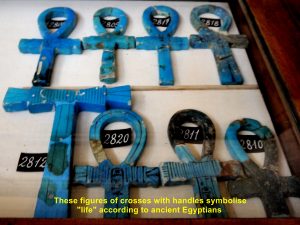
Figures with crosses and handles known as Ankhs are a symbol of life and good health in ancient Egyptian religion
King Tutankhamun
King or Pharoah Tutankhamu is the best known ancient Egyptian king in the world. It is because when his tomb was discovered in 1922 in the Valley of the Kings in Luxor, it was still intact and most of his items, over 5000 of them, were still in the tomb.
Special Room for King Tutankhamun’s Possessions
Some of the king’s objects are exhibited in a special room in the Egyptian Museum, Cairo. Unfortunately, taking photographs of his items in the room is not allowed.
Replica of Tutankhamun’s golden mask in the Egyptian Museum, Cairo
King Tutankhamun was born in 1341 B.C., became king at 9 years old in 1332, married his half-sister at 11 and passed away at 18 in 1323 B.C.. He ruled Egypt for about 10 years from 1332 B.C. until 1323 B.C..
Egyptian Deities
Ancient Egyptians worshipped many deities, as many as 114. Some of them are shown in the two pictures below.
They stopped worshipping them when Christianity and Islam spread to their homeland.
Ancient Egyptian Writing
The ancient Egyptians had a writing system that uses pictographic characters known as hieroglyphs. There are over 700 characters in the system. Some of them are shown in the picture below.
Jean Francois Champollion(1790 – 1832)
For many years no one knew how to read the hieroglyphic writing until 1822 when a Frenchman, Jean Francois Champollion(1790 – 1832 A.D.), was able to decipher it.
Rosetta Stone
There was a stone that was found near Rosetta Village(Rashid) by a French soldier in 1799. Known as Rosetta Stone, it has three kinds of writings , namely hieroglyphic at its top, demotic in the middle and Greek at the bottom. As Champollion knew the last two he deciphered the hieroglyphic writing in 1822, successfully. He found out that the hieroglyphs were phonetic representing the speech sound.
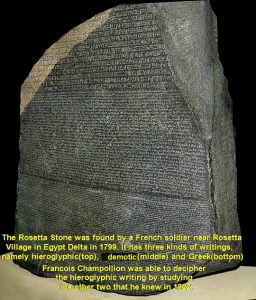
The Rosetta Stone was found in Egypt Delta in 1799 and Champollion was able to decipher the Egyptian hieroglyphic writing in 1822 inscribed on it.
Le Meridien Pyramids Hotel, Cairo
After a long day of visiting two important places in Cairo, viz. Salah el Din Citadel and Egyptian Museum, we checked in at a hotel, Le Meridien Pyramids Hotel, in the city and stayed for a night. We would be flying to Luxor for more visits on the following morning.
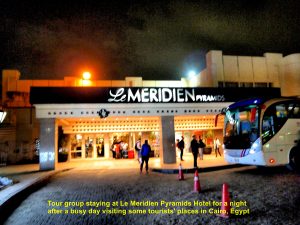
Tour group spending a night at Le Meridien Pyramids Hotel after a busy day visiting some tourists’ places in Cairo
Egypt Travel Parts I to XII:
Egypt Travel Part I :Salah el Din Citadel, Muhammad Ali Mosque, Tahrir Square and Egyptian Museum
Egypt Travel Part II :Valley of the Kings, Hatshepsut Temple and Colossi of Memnon
Egypt Travel Part III :Hot Air Balloons and Karnak Temple Complex
Egypt Travel Part IV :Papyrus Paper-Making, Luxor Temple and Esna Lock
Egypt Travel Part V :Edfu Temple, Kom Ombo Temple and Galabia Party
Egypt Travel Part VI :Abu Simbel Temples and Nubian Village(Elephantine Island)
Egypt Travel Part VII :Unfinished Obelisk, Aswan High Dam and Philae Temple
Egypt Travel Part VIII:Ahmed Hamdi Tunnel, Moon Beach(Ras Sudr), and St. Catherine
Egypt Travel Part IX :Mount Sinai, Catherine’s Monastery and Sharm el Sheikh
Egypt Travel Part X :Sharm el Sheikh
Egypt Travel Part XI :Cairo Food, Saqqara Step Pyramid Complex and Memphis
Egypt Travel Part XII :Great Giza Pyramid Complex and Khan el Khalil Bazaar
Egypt Travel Part II: Valley of the Kings, Hatshepsut Temple and Colossi of Memnon
Egypt Travel II: Valley of the Kings, Hatshepsut Temple and Colossi of Memnon
Day 2 Thursday, 14 Dec 2017
Flying from Cairo to Luxor by Egypt Air
Early in the morning we left Le Meridien Pyramids Hotel in Cairo and went to the airport nearby. At the airport we took an Egypt Air plane and flew to Luxor which is about 500 km in the south.
Map showing the location of Luxor, Egypt
Tour group boarding an Egypt Air plane at Cairo Airport
Luxor Airport
After flying for about an hour and 10 minutes , we arrived at the Luxor International Airport.
We were going to spend two days in Luxor making a few visits and doing some activities.
The first place we visited in Luxor was the Valley of the Kings.
Valley of the Kings
Located on the west bank of River Nile near Luxor city, Valley of the Kings is a necropolis or cemetery for the kings, powerful noblemen and their family members of the New Kingdom(18 – 20th. Dynasties of Ancient Egypt). From 1539 until 1075 B.C., a period of about 500 years, those deceased were buried there. So far about 63 tombs have been discovered but most of the treasures belonging to them were looted.
The first king to be buried there was Thutmose I(1504 – 1492 B.C.) and the last one was Ramesses XI who died in 1077 B.C.
Photos of the Valley of the Kings
Entry Ticket to the Valley of the Kings
Visitors have to buy a ticket to visit the Valley of the Kings and it looks like the one below.
Shuttles
Shuttles will bring visitors to the valley which is several hundred metres away from the entrance.
Writer and Family
Writer, wife, brother and sister-in-law went to the valley together to see the tombs of well-known ancient Egyptian kings and nobles.
A Happy Family
A happy family together with the rest of the tour group went to the Valley of the Kings.
Paths to the Tombs
There are paths leading to all the known tombs in the valley.
Tutankhamun Tomb
The most famous tomb was that of King Tutankhamun. Tutankhamun became king at the age of 9 in 1332 B.C. and ruled Egypt for 10 years before he died at the age of 18 in 1323 B.C. Nobody knows the exact cause of his death. Many scientists thought he died of a disease.
Howard Carter
Tutankhamun tomb was discovered by an English archaeologist, Howard Carter, in 1922 and found to be almost intact. Most of his possessions were still in the tomb, including his golden mask that is now in the Egyptian Museum in Cairo.
“Curse of the Pharaoh”
8 of the 58 people who were present when Pharaoh Tutankhamun’s tomb(sarcophagus) was opened died a few years later. Rumours of a “curse of the pharaoh” were spread by newspapers to boost their sales. Many of them lived a long life including Howard Carter who died in 1939 at the age of 64, 13 years after he and others discovered the Pharaoh Tutankhamun’s tomb in the Valley of the Kings.
Entrance to the tomb of Pharaoh Tutankhamun in the Valley of the Kings
Tutankhamun Burial Chamber
The diagram below shows the burial chamber of Tutankhamun deep in the ground in the Valley of the Kings.
Tomb of Ramesses II’s Sons
This tomb for Ramesses II’s sons is the largest in the Valley of the Kings in Luxor. The pharaoh ruled Egypt from 173 B.C. until 1213 B.C. and had more than 160 children.
j. Tomb of Ramesses IX
Ramesses IX ruled Egypt from 1129 B.C. until he died in 1111 B.C.. His tomb is in the Valley of the Kings, Luxor.
k. Ramesses VII’s Tomb
Ramesses VII ruled Egypt from 1136 B.C. until he died in 1129 B.C.. He was succeeded by Ramesses III’s son, Ramesses VIII, who ruled Egypt for a year(1129 – 1130 B.C.).
l. Merenptah’s Tomb
Merenptah was the 13th. son of Ramesses II and ruled Egypt for 10 years from 1213 B.C. until he died in 1203 B.C..
Visit to the Mortuary Temple of Hatshepsut, Deir el Bahari
In the afternoon we left the hot and dry Valley of the Kings and went to the other side of the mountain where a mortuary known as Mortuary Temple of Hatshepsut was located.
Entry Ticket to the Mortuary Temple of Hatshepsut, Deir el Bahari
Mortuary Temple of Hatshepsut
Mortuary Temple of Hatshepsut was built at the bottom of the cliffs of Deir el Bahari close to the Valley of the Kings and on the west bank of River Nile in Luxor. It was built for Queen Hatshepsut, the Pharaoh of the 18th. Dyanasty who ruled Egypt from 1478 B.C. until 1458 B.C., and dedicated to the Sun God, Amun-Ra.
Queen Hatshepsut’s tomb is believed to be in the Valley of the Kings.
Photos at the Temple
Here are some photos taken at the temple site.
Panoramic View of the Mortuary Temple of Hatshepsut in Deir el Bahari, West Luxor
Tour Group at the Mortuary Temple of Hatshepsut
A Restored Sphinx at the Mortuary Temple of Hatshepsut
Statues of Osiris at the entrance of the Mortuary Temple of Hatshepsut
Ancient Egyptians believed that Osiris was the god of transition, resurrection and regeneration. Many large statues of that god can be seen in front of the temple.
Bark Hall Entrance of the Mortuary Temple of Hatshepsut
Entrance to the Bark Hall of the Sanctuary of the Sun Deity, Amun-Ra, in the Mortuary Temple of Hatshepsut
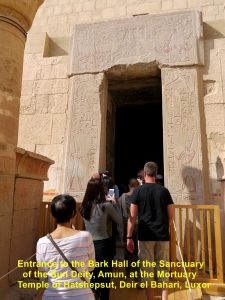
Entrance to the Bark Hall of the Sanctuary of the Sun Deity, Amun-Ra, in the Mortuary Temple of Hatshepsut
Bark Hall of the Sanctuary of the Sun God, Amun
The innermost Sanctuary of the Sun Deity, Amun
Panoramic view outside the Mortuary Temple of Hatshepsut
View from the temple to River Nile in the background
Visit to Abd Shanab Alabaster Shop
After the visit to the Mortuary Temple of Hatshepsut, we went to a shop, Abd Shanab Alabaster, in Luxor town to learn about alabaster carving of ancient Egyptian objects.
Abd Shanab Alabaster
When we arrived at Abd Shanab Alabaster shop its workers showed us the method of sculpturing alabaster stones into ancient Egyptian objects and figures.
Then we entered the shop and were introduced to many ready-made products which were for sale. They were beautifully made with details. The photos below show some of them displayed in the shop.
Colossi of Memnon
Soon we left the shop and went to a bank of River Nile in town to board a cruise boat called Jamina. On the way we saw two giant statues, Colossi of Memnon. They were both statues of Pharaoh Amenhotep III, the 9th. Pharaoh of the XVIIIth. Dynasty(1550-1292 B.C.). They were found buried in the ground many years ago and restored with many missing parts.
Cruise Boats on River Nile
When we arrived at the bank of River Nile, we saw many cruise boats and we boarded one of them known as Jamina. We would cruise on that boat from Luxor to Aswan in the south for four days stopping at some cities to visit their historical sites.
Egypt Travel Parts I to XII
Egypt Travel Part I :Salah el Din Citadel, Muhammad Ali Mosque, Tahrir Square and Egyptian Museum
Egypt Travel Part II :Valley of the Kings, Hatshepsut Temple and Colossi of Memnon
Egypt Travel Part III :Hot Air Balloons and Karnak Temple Complex
Egypt Travel Part IV :Papyrus Paper-Making, Luxor Temple and Esna Lock
Egypt Travel Part V :Edfu Temple, Kom Ombo Temple and Galabia Party
Egypt Travel Part VI :Abu Simbel Temples and Nubian Village(Elephantine Island)
Egypt Travel Part VII :Unfinished Obelisk, Aswan High Dam and Philae Temple
Egypt Travel Part VIII:Ahmed Hamdi Tunnel, Moon Beach(Ras Sudr), and St. Catherine
Egypt Travel Part IX :Mount Sinai, Catherine’s Monastery and Sharm el Sheikh
Egypt Travel Part X :Sharm el Sheikh
Egypt Travel Part XI :Cairo Food, Saqqara Step Pyramid Complex and Memphis
Egypt Travel Part XII :Great Giza Pyramid Complex and Khan el Khalil Bazaar
Egypt Travel Part III: Hot Air Balloon and Karnak Temple Complex
Egypt Travel Part III: Hot Air Balloon and Karnak Temple Complex
Day 3 Friday, 15 Dec 2017
Early in the morning, we left our cruise boat at Luxor City and went to a place near Del el Bahari where Mortuary Temple of Hatshepsut is located and oh the west bank of River Nile.
Tour group going off for hot air balloon ride at sunrise
Hot Air Balloons in the Sky
On arrival at the site, we saw several hot air balloons that were already flying in the sky.
Warming-Up
Before we got into a balloon basket, we warmed up first.
Gas-Burners
The balloon was filled with air and then heated by gas-burners to get the balloon upright.
Hot Air is Light
Gas-burners are used for heating the air in balloons to make them light.
Three Cylinders of Gas
Three cylinders gas are used for heating the balloon.
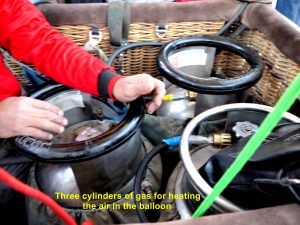
Three cylinders of gas for heating hot air-balloone, 24 of us, got into a large basket and soon we were flying in the sky.
Large Basket
24 of us got into a large basket of the hot air balloon and soon we were going up in the sky, slowly.
Bakr, the Pilot of the Hot Air Balloon
The pilot of the balloon was Bakr from Hod Hod Soliman Company, Luxor. As we were flying over the fertile flood plain of River Nile and the historical Thebes Necropolis where graves of ancient Egyptian royal members and powerful nobles are sited, Bakr would point at the important sites below and beyond and tell the tour-members about them.
Bakr, the pilot of the hot air balloon
Hot air in the balloon makes the balloon rise
Panoramic View of the Thebes Necropolis, Luxor
The panoramic view of the Thebes Necropolis and fertile flood plain of River Nile was breathtaking.
Aerial View of Thebes Necropolis and Fertile Flood Plain of River Nile
Ruined Temples
There were a few temples which were already in ruin in the Thebes Necropolis. Among them was the ruined Temple of Ramesses III which we sighted.
Valley of the Queens
Looking further away we saw the Valley of the Queens where pharaohs’ wives were buried.
Fertile Flood Plain
The aerial view of the fertile flood plain adjacent to the Thebes Necropolis was spectacular. It was richly cultivated and inhabited by farmers.
Landing
After flying for more than an hour in the sky and enjoying the awesome sights of the place, we finally landed, safely, on an empty land which was a couple of km away from the site where we lifted off. Then we were each given a certificate from Hod Hod Soliman Company that stated that we had flown in a hot air balloon.
Exhilarating Feeling
While I was on the ground, my exhilarating feeling of flying in the hot air balloon lingered on for awhile.
Tour Members receiving certificates of successful hot air balloon ride
Visiting Karnak Temple Complex
After the unforgettable hot air balloon experience, we went to an ancient temple complex located about 2 km north of Luxor town.
Karnak Temple Complex
Karnak Temple Complex consists of some temples that were built several thousand years ago. The temples are already in ruin but restoration works have been on-going.
Temple of Ramun-Ra, the Sun-God
There is one, Temple of Ramun-Ra, that has been partially restored and opened to public. It was dedicated to the Sun God, Ramun-Ra.
Model of the Temple of Ramun-Ra in the Karnak Temple Complex
Old Photo of the Aerial View of Temple of Ramun-Ra
The Front of the Temple of Ramun-Ra
Entrance to the Great Hypostyle Hall of the Temple of Ramun-Ra
Statues of Ramun-Ra and his daughter, Meri-Amun, at the entrance of the Great Hypostyle Hall of the Temple of Ramun-Ra
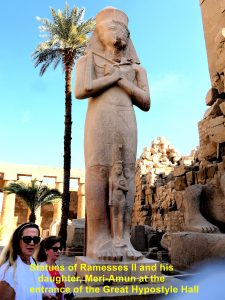
Statues of Amun-Ra and his daughter, Meri-Amun, at the entrance of the Great Hypostyle Hall of the Temple of Amun-Ra
134 Columns in the Great Hypostyle Hall of the Temple of Ramun-Ra
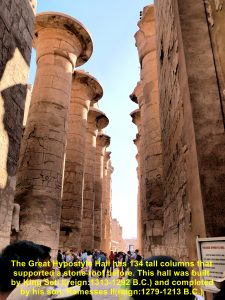
134 tall columns in the Great Hypostyle Hall were built to support a stone roof of the Temple of Amun-Ra
Obelisk of Queen Hatshepsut at the Temple of Ramun-Ra
Obelisks of King Tuthmosis I and Queen Hatshepsut at the Temple of Ramun-Ra
A Pylon of the Karnak Temple Complex is Under Restoration
A Ruined Temple at the Karnak Temple Complex
A Relief of the Temple of Amun-Ra
Egyptian Hieroglyphs in the Temple of Amun-Ra
Sondos Papyrus
After the visit to the Karnak Temple Complex, we went to a shop, Sondos Papyrus in Luxor City. It was selling arts on papyrus papers.
Egypt Travel Parts I to XII
Egypt Travel Part I :Salah el Din Citadel, Muhammad Ali Mosque, Tahrir Square and Egyptian Museum
Egypt Travel Part II :Valley of the Kings, Hatshepsut Temple and Colossi of Memnon
Egypt Travel Part III :Hot Air Balloons and Karnak Temple Complex
Egypt Travel Part IV :Papyrus Paper-Making, Luxor Temple and Esna Lock
Egypt Travel Part V :Edfu Temple, Kom Ombo Temple and Galabia Party
Egypt Travel Part VI :Abu Simbel Temples and Nubian Village(Elephantine Island)
Egypt Travel Part VII :Unfinished Obelisk, Aswan High Dam and Philae Temple
Egypt Travel Part VIII:Ahmed Hamdi Tunnel, Moon Beach(Ras Sudr), and St. Catherine
Egypt Travel Part IX :Mount Sinai, Catherine’s Monastery and Sharm el Sheikh
Egypt Travel Part X :Sharm el Sheikh
Egypt Travel Part XI :Cairo Food, Saqqara Step Pyramid Complex and Memphis
Egypt Travel Part XII :Great Giza Pyramid Complex and Khan el Khalil Bazaar

